HURRICANE GUIDE 2025
THE WEATHER AUTHORITY
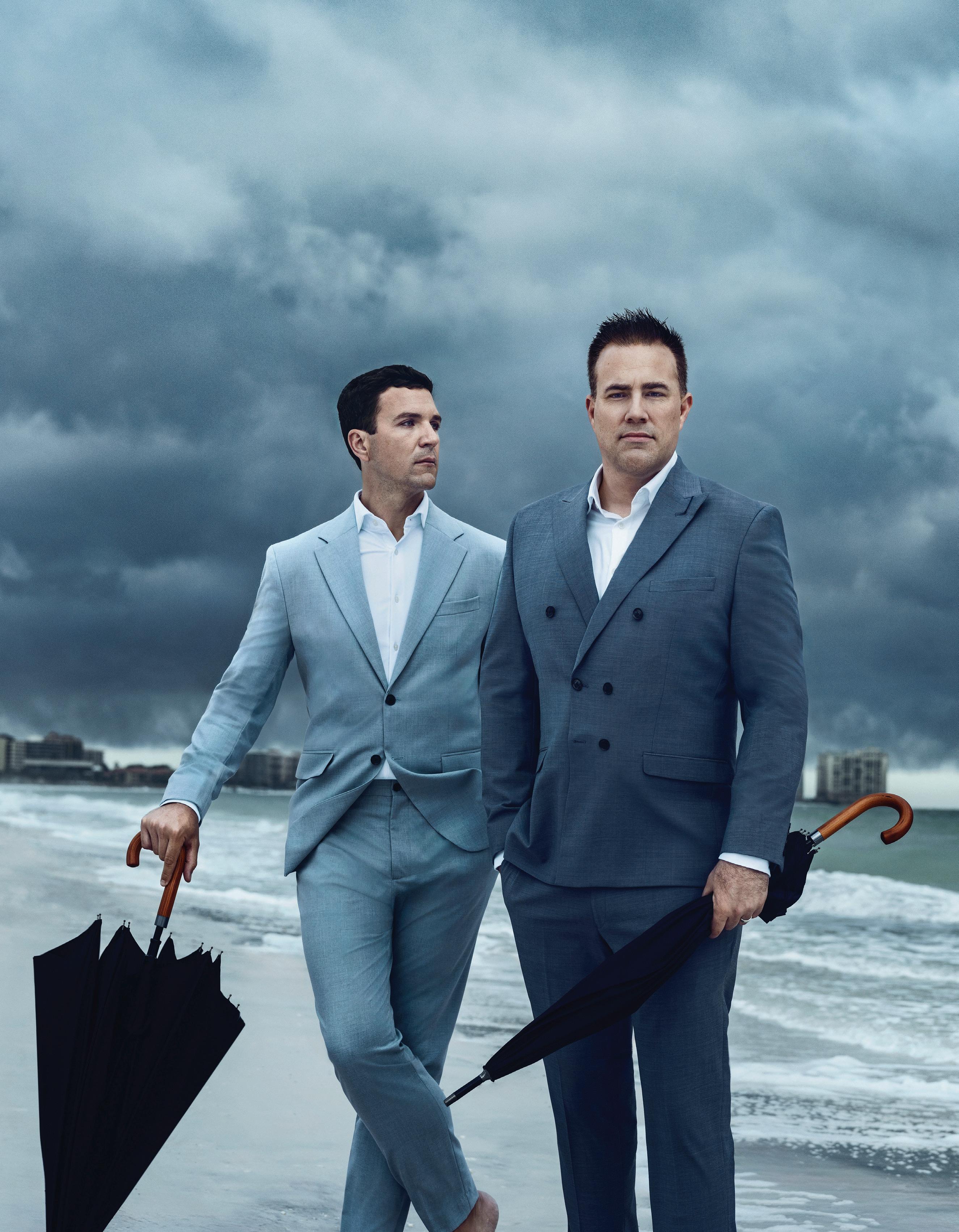
Early Forecast for the 2025 Season
WINK, The Weather Authority
Working To Keep You Safe
Start Your Safety Preparations Now
Evacuating to a Shelter; What You Need to Know


THE WEATHER AUTHORITY

Early Forecast for the 2025 Season
WINK, The Weather Authority
Working To Keep You Safe
Start Your Safety Preparations Now
Evacuating to a Shelter; What You Need to Know

Debris should be placed curbside, without blocking the roadway or storm drains.
Any debris placed from the sidewalk toward your proper ty will not be picked up.
APPLIANCES & WHITE GOODS
CONSTRUCTION & DEMOLITION DEBRIS
VEGETATIVE DEBRIS
Normal Household Trash
Normal household trash and bagged debris of any kind will not be picked up with disaster debris You should continue to follow your normal garbage removal schedule
Leaves (do not put in bags) * If you have a lot of leaves and small twigs in plastic bags, please set those aside from any brush piles. Logs Plants Tree branches
Building materials
Carpet
Dr ywall
Furniture
Lumber
Mattresses
Plumbing
Air conditioners
Dishwashers
Freezers
Refrigerators
Stoves
Washers, dr yers
Water heaters
ELECTRONICS
Computers
Radios
Stereos
Televisions
Other devices with a cord
HOUSEHOLD HAZARDOUS WASTE
Check with your local government.
* The brush will be ground into mulch, so plastic must be avoided.
Separate debris into the six categories shown.
Placing debris near or on trees, poles, or other structures makes removal di cult. This includes re hydrants and meters.
If you don’t have a sidewalk, ditch, or utility line in front of your house, place debris at the edge of your proper ty before the curb
What is the di erence between storm-related debris and regular household trash?
Storm debris includes any trees, tree limbs and shrubs that went down in the hurricane. Regular household trash is what you would throw away in a typical week.
When will the storm debris be collected from my curb and what should I do to prepare?
There is no schedule for when storm debris will be collected from your neighborhood, but be assured that it will. Cleanup e orts take time. When will my regular household collections resume?
Regular collections of garbage, recycling and your normal weekly yard waste resume as soon as it is safe for collection crews to do so.
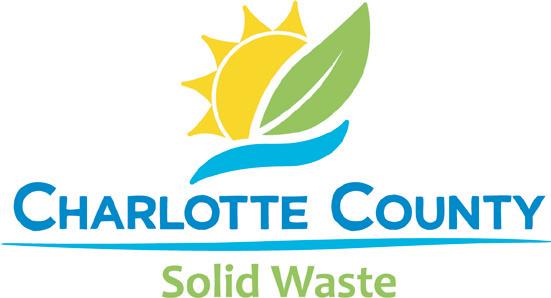
www.charlottecountyfl.gov 941-764-4360

www.colliercountyfl.gov 239-252-2380

www.leegov.com/solidwaste 239-533-8000
• Cut back any trees or branches that contact your house, pool cage, shed or other buildings.
• Thin foliage so wind can blow freely through branches and decrease chances the plant will become uprooted.
• Clean your property of any items that could become a projectile during a storm such as old lumber, broken lawn furniture, etc., and place them at the curb on your regular waste collection day.
• Place trimmings at the curb on your regular collection day. Yard waste must be containerized in a separate yard waste container, paper lawn and leaf bag, or bundled. Yard waste in plastic bags will not be collected.
CHA RLOTTE C OUNTY
Containers and bundles cannot weigh more than 40 lbs. each. Limbs cannot be more than 6 feet in length or 10 inches in diameter.
Containers and bundles cannot weigh more than 50 lbs. each. Limbs cannot be more than 4 feet in length or 4 inches in diameter. A total of ten 45gallon containers or ten bundles of yard waste may be placed curbside.
Once a storm is named or a hurricane watch / warning is issued:
• Place garbage and recycle carts inside or secure them so they cannot blow or float away due to strong winds or storm surge.
• Do not cut down trees or do any major yard work. Mass cutting produces a burden on the normal collection process.
• Do not begin construction projects that produce debris unless absolutely necessary to protect life and property.
• Secure all debris, and do not place materials of any kind at the curb during a Watch or Warning period.
• Services may be suspended and facilities may close early to prepare for the storm. Residents should monitor local media and their county government websites or social media platforms for information on collection service statuses and any changes to disposal facility operations.
Containers and bundles cannot weigh more than 50 lbs. each. Limbs cannot be more than 6 feet in length. Up to 50 lbs. of unbundled palm fronds may be placed at the curb. Do not place yard waste in plastic bags.
After the storm has passed:
• Most important – keep storm debris separate from your regular household garbage and recycling.
• Storm debris should be sorted into separate piles for garbage, yard waste, appliances, furniture & other bulky waste, appliances and construction debris as shown in the diagram to the left. Check with your local government regarding set out of household hazardous waste.
• Storm generated debris of any kind that is bagged will not be picked up.
• Pick up will generally be done with a mechanized claw truck so it’s important that you not set debris over buried electric/phone lines, water meters, hydrants or mailboxes. Inspectors will tour each part of the county to determine where collection needs are greatest.
• Be patient. Following a storm, the No. 1 priority is the health and safety of our community and restoration of the county. When collection services resume, place garbage curbside away from storm-related debris on your regular collection service day.
• Debris collection guidance and recovery process updates will be available through local media and on county government websites and social media platforms.
Waterproof,

*This coupon entitles its holder to receive 10% off the MSRP of any qualifying Coretec flooring purchase up to $10,000, for a maximum savings of up to $1000. COUPON MUST BE PRESENTED IN PERSON, AND PRIOR TO A PREPARED WRITTEN QUOTE. Cannot be combined with any other coupon, sale, discount, or promotion. Coupon may not be duplicated or used more than once; limit one per household. This coupon is valid only on purchases made between April 1, 2025 and November 30, 2025. Special 12-month 0% financing is available, pending credit approval. See store for qualifying styles and additional details. Valid only at Hadinger Flooring of Naples.















Reece Windows & Doors is a company that is committed to 100% customer satisfaction. This is why we only use in-house installers, offer lifetime warranties, and conduct final inspections to ensure all work is completed to our high standards.
“We had all windows and our front door replaced by Reece and they look and work great. I would definitely use them again.” -Valerie E.





















If you need free disaster legal assistance, Florida Rural Legal Services (FRLS)—a non-profit law firm serving urban and rural communities—is ready to help with post-hurricane legal challenges, includin
Insurance Claims for Property Damage & Personal Property Loss
Landlord Disputes Due to Storm Damage

Home Repair Contracts & Contractor Issues & More

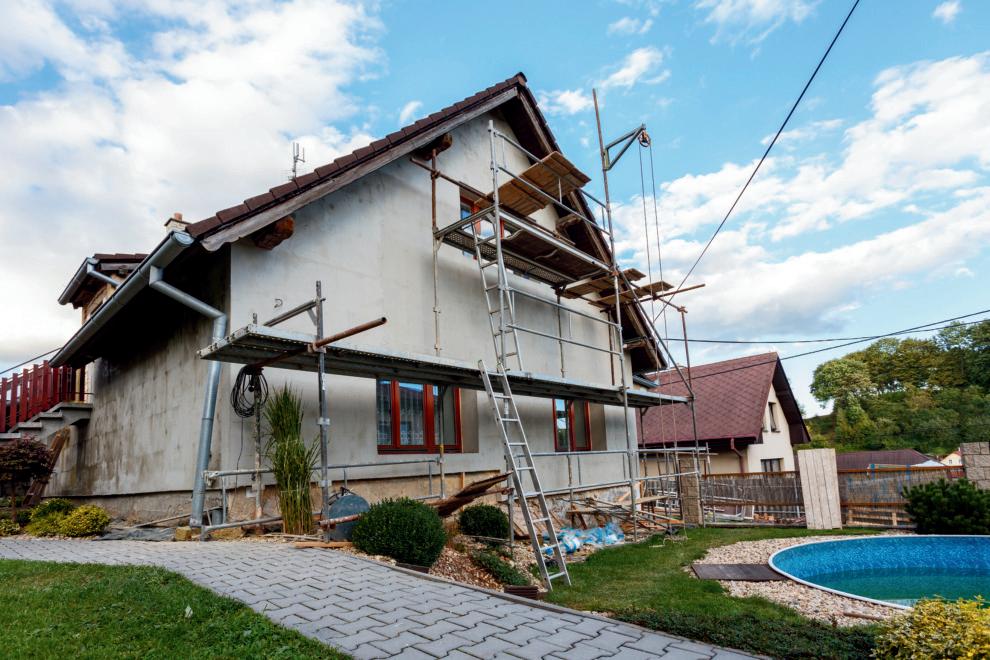

TENANTS:
Locate your lease before the storm; it contains important info about your rights. Obtain renters' insurance to protect your personal belongings.
HOMEOWNERS:
For insurance purposes, take pictures of your home immediately before & after the storm.
Be cautious of fraudulent repair contractors. Always verify licenses and get contracts in writing.
If you're struggling to pay your mortgage, you may be eligible for forbearance or payment assistance.
Welcome to the 2025 WINK News Hurricane Guide. Hurricane season is now here, and for the next six months, the WINK Weather Team will constantly monitor for tropical depressions, tropical storms and hurricanes that could be a potential threat to Southwest Florida.
The 2024 Atlantic Hurricane Season was the third costliest on record, with preliminary damages of at least $130 billion. There were 18 storms and 11 hurricanes, including two Category 5 hurricanes (Beryl and Milton) for the first time since 2019. Beryl was the earliest Category 5 Atlantic hurricane on record and only the second recorded in July. Milton was the strongest of the season and worldwide. At its peak, it was one of the most intense hurricanes ever recorded in the Gulf. Helene was the most damaging and deadliest, killing over 200 people and causing widespread damage from the Florida Big Bend all the way into the Carolinas, especially from inland flooding.
Although we didn’t reach the 23 storms predicted by the experts at Colorado State University’s Department of Atmospheric Science, the 2024 season was a reminder that it’s not always about numbers; it’s about impact! For example, the 1992 Hurricane Season was well below average, with just seven storms and one major hurricane. But the major hurricane was Category 5 Andrew,

which brought catastrophic impacts and forever changed South Florida. The same thing applies to Southwest Florida in 2022. Technically, that season had an average number of storms (14). However, for those who went through Hurricane Ian, the worst hurricane and natural disaster in Southwest Florida history, our season was far from “average.”
The outlook for the 2025 Hurricane Season is to be potentially above average. I know you’re thinking, “They say that every year.” Frankly, the past several years have been active! In fact, the last time we had a below-average season was 10 years ago in 2015. For comparison, an average year has 14 storms, seven hurricanes and three major hurricanes. This year, models indicate lower possibilities for a hyperactive year in terms of the number of storms, but as always, that’s not guaranteed. Again, it’s about impact, not quantity. The 2010 hurricane season had an aboveaverage number of storms as predicted, but many curved out to sea. What factors will play a role in this hurricane season? For that answer, we’ll look at the eastern Pacific Ocean. The surface temperatures of those waters can alter weather patterns across the Atlantic and the world. When they’re cooler than average, we call that a La Niña. Warmer than average waters create an El Niño pattern, which is what we pre-
fer during hurricane season. That’s because El Niño increases wind shear in the Tropical Atlantic Ocean, which can help weaken or rip storms apart. By contrast, La Niña often lowers wind shear in the Tropical Atlantic, which can promote more and stronger storms. Long-range models are split between La Niña or neutral conditions during the peak of this Hurricane Season.
Another factor in tropical activity is water temperatures across the Atlantic, Gulf and Caribbean. The warmer the water is, the more power and fuel storms have to grow and intensify should they occur with other favorable ingredients. What could help mitigate these storms is dry, dusty air from Africa (Saharan Dust) moving across the Atlantic, which can hurt tropical systems. I’ll also watch the strength and location of high pressure in the Atlantic Ocean; a big player in steering hurricanes. Keep this helpful guide handy and stay alert during hurricane season. Prepare now when the weather is quiet. Don’t wait until a hurricane is on the way to gather supplies and develop a plan for your family.
I’ll be here every step of the way calmly guiding you through any future storms that may decide to come our way. Trust WINK, The Weather Authority, to deliver accurate information 24/7 all season long. Let’s have a safe 2025!





8
A message from Matt Devitt
The chief meteorologist for WINK News, The Weather Authority, presents this year’s guide.
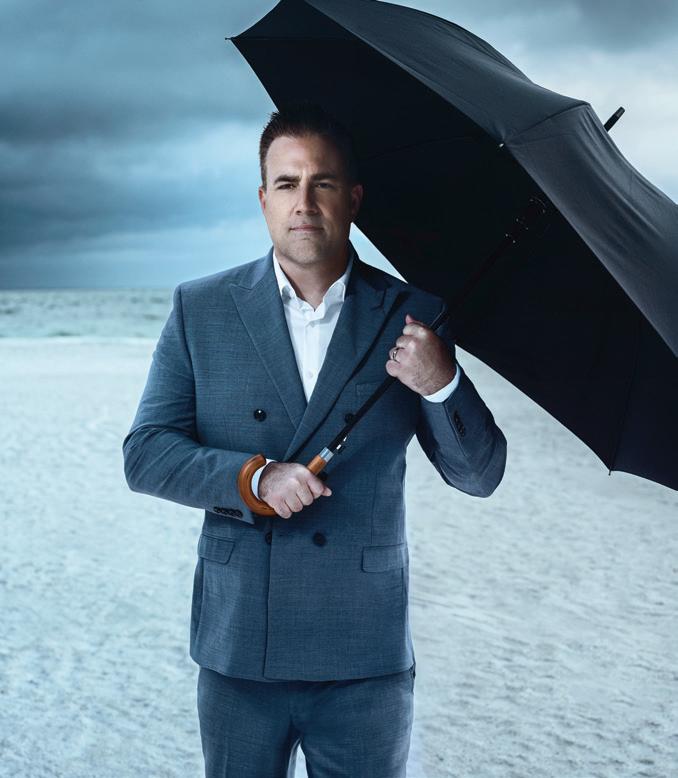
12
Prepare now for the season ahead
Hurricanes can be destructive and potentially deadly. Take those risks, and your safety, seriously.

14
The 2025 hurricane outlook
The first 2025 Atlantic hurricane season outlook from the Colorado State University hurricane research team predicts above-average activity.
18
Terms to know Eyewall, gale warning, El Niño and other hazards; the terms you need to know to stay safe.
20
The Saffir-Simpson Hurricane Scale
Understanding how to rate a storm’s intensity.
22
Southwest Florida evacuation zones
A handy map to help you know the zone you live in and what to do if a hurricane threatens.

25
Preparing now can save lives later Rick Scott, U.S. Senator from Florida and former governor, on the importance of having a plan in place for hurricane season.
26
Always working to keep you safe
The tools the WINK Weather Team uses to keep you informed and prepared.
34
Understanding storm surge Surge can be deadly. Be prepared to protect yourself, your family and your property.
42
Preparing your family
Tips to help your family be ready for a hurricane.

25
44
Storm preparation checklist
Everything you’ll need to safely weather the storm.


46
Preparing your home / preparing your boat
Tips and precautions to avoid or minimize storm damage to your home and boat.
52 After the storm
Understanding the potential dangers and hazards you may face during clean-up and recovery.
60
Dangers of electricity
Tips to protect yourself from downed power lines, household wiring, electric vehicles and more after a hurricane.
66
Staying healthy in a hurricane
How to practice self-care before, during and after the storm.
68
Evacuating to a shelter
If evacuation orders are issued, get to a safe place— even if it means going to a shelter. Here’s what to know before you go.


72
Area shelters and refuges of last resort
An updated list of Southwest Floridaarea shelters, helpful information, resources and a map.

78
Important area phone numbers and websites
A handy resource to find the help you need before, during and after a hurricane.

80 Always there
WINK News, The Weather Authority, stays with you through every storm.

The time to ready your home, family and property for hurricane season is now. Waiting until a storm is near Southwest Florida could be too late to do what’s needed to protect your family and property.
Hurricane season officially runs from June 1 to Nov. 30, and a major storm can strike Southwest Florida at any time during those months. Though we always hope for a quiet hurricane season, remember that any hurricane, regardless of strength, can be a life-changing experience. In 2024, Hurricanes Debby, Helene and Milton demonstrated that any storm can bring destructive winds, flooding and storm surge that can destroy homes large and small, topple the tallest trees, upend lives and level entire communities.
The 2025 WINK News Hurricane Guide is provided to help you and your family avoid those misfortunes. Assembled by WINK News, The Weather Authority, this guide is made to help you prepare early for the upcoming hurricane season. Keep a copy of the 2025 WINK News Hurricane Guide handy throughout the season so that you’ll be ready to do what’s necessary for the safety and protection of your family, home and property. This guide will highlight the supplies you’ll need, as well as how to establish a communication plan and an evacuation strategy. Finally, and most importantly, this guide will provide vital information to help you deal with the effects of a hurricane, physically, emotionally and financially.
The key takeaway from this guide is that the preparations and preventative steps taken before hurricane season can play a critical role in helping you and your family safely survive a major storm. By preparing early and staying informed and alert, you, your family and your friends can make it safely through another hurricane season.
The 2025 WINK News Hurricane Guide has been produced for you. Please use it to keep yourself, your family and your property safe and sound.



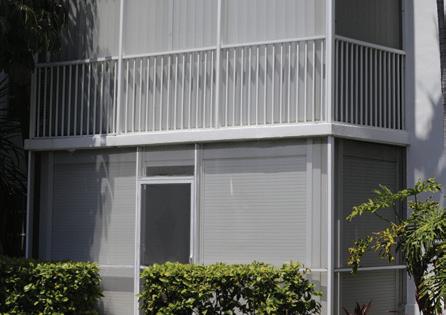








The hurricane research team at Colorado State University has issued its first 2025 Atlantic Hurricane Season forecast, and it is predicting an aboveaverage tropical weather season.
The Atlantic Hurricane Season runs from June 1 to Nov. 30. The CSU Tropical Meteorology Project research team is predicting 17 named storms in 2025, and that nine of those named storms will become hurricanes. Of the nine named storms, the CSU team is projecting four will reach major hurricane status. A major hurricane has sustained winds of at least 111 miles per hour and is classified as either a Category 3, 4 or 5 on the Saffir-Simpson scale(page 20). An average tropical weather season in the Atlantic basin sees 14 storms, seven named storms and three major hurricanes.
The conditions expected to drive tropical weather activity this year are the warm temperatures in the Atlantic and what’s expected to be a weak El Niño climate pattern in the Pacific. That’s important since an El Niño pat-
tern can help minimize hurricane development.
“We don’t anticipate El Niño this summer and fall. El Niño is warmer than normal water in the Central and Eastern tropical Pacific Ocean. When that occurs it tends to shift where the thunderstorms form in the Pacific Ocean in such a way that it generates more vertical wind shear … and too much shear tears apart hurricanes as they’re trying to develop and intensify. But we don’t think we’re going to have El Niño,” says Dr. Phil Klotzbach, a research scientist with the Department of Atmospheric Science at Colorado State “The other piece that we see is that the Atlantic, while thankfully not nearly as warm as it was last year at this time, is still running warmer than normal. A warmer-than-normal Atlantic basically just provides more fuel for developing hurricanes, since hurricanes live off of that warm ocean water.”
Though much emphasis is placed on the hurricane numbers predicted by the CSU team in April, Klotzbach noted that things can change in subsequent outlooks released closer to hurricane season. Even if the April outlook is completely accurate, Klotzbach said there are still unknowns involved.
“Hurricane season doesn’t start until June 1 and doesn’t really ramp up until August, so there’s just a lot of stuff that can still change. So, there is that uncertainty,” he says. “These are forecasts for the entire Atlantic Ocean. So remember, no forecast is perfect. Busier seasons have more landfalling hurricanes. But even if






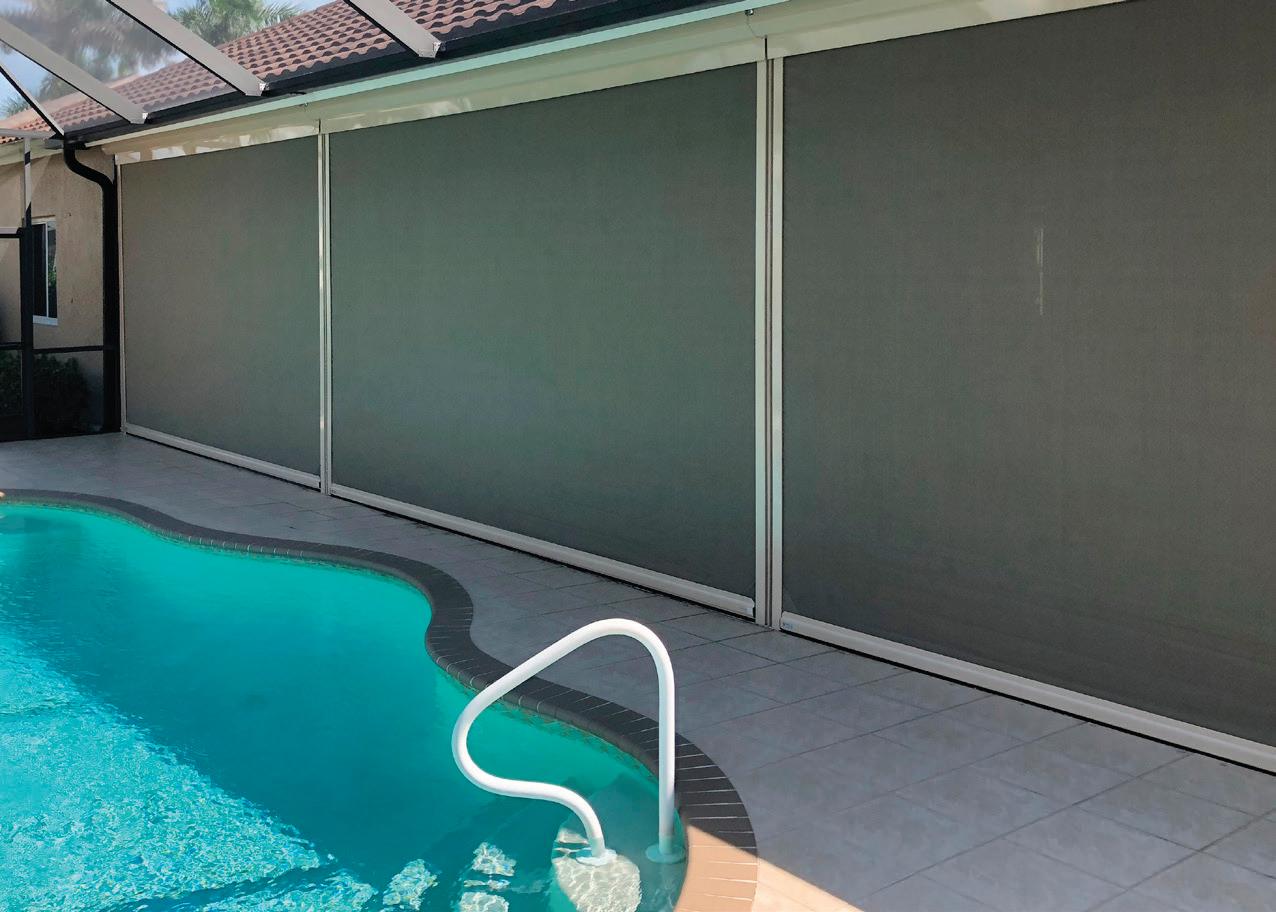








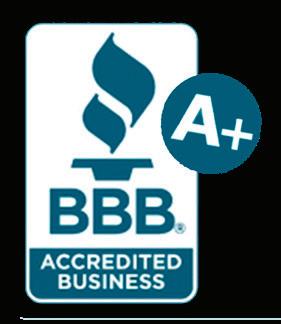
The following names have been selected for storms in the Atlantic Basin during the 2025 hurricane season. ANDREA BARRY CHANTAL
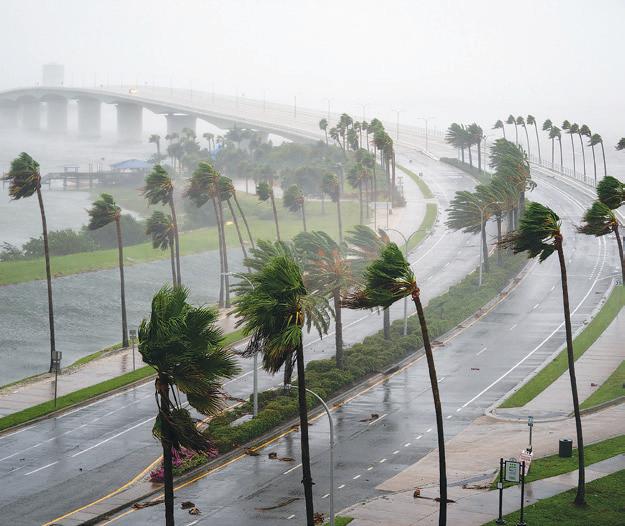
we get exactly nine hurricanes, we can’t tell you where those nine hurricanes are going.”
The CSU research team is anticipating a 51% probability of at least one major hurricane making landfall somewhere along the coastline of the United States in 2025. That compares with the average of 43% for the years between 1880 and 2020. In addition, the researchers say the chance of a major hurricane making landfall along the East Coast of the United States, including the Florida peninsula, is 26%; the 140-year average was 21%. The CSU team put the probability of a major hurricane hitting the Gulf Coast — from the Florida panhandle westward to Brownsville, Texas — at 33%. The average from 1880 to 2020 is 27%.
dicting between 13 and 18 named storms for the 2025 Atlantic hurricane season, with a 20% chance of more than 20. Of those, they’re predicting seven to 10 hurricanes and three to five major hurricanes reaching Category 3 or higher. In addition, AccuWeather projects three to six hurricanes will make landfall in the United States.
In a release, Alex DaSilva, AccuWeather’s Lead Hurricane Forecaster, said that the Gulf coast and the Carolinas are facing a higher-thanaverage risk of direct impact from tropical weather in 2025. DaSilva also cautioned that, as the 2024 hurricane season demonstrated, every storm can be dangerous.
The World Meteorological Organization maintains rotating lists of names for each of 10 tropical cyclone basins. In the Atlantic, for instance, tropical cyclones receive names in alphabetical order, and women’s and men’s names are alternated. The Atlantic list covers just 21 letters of the alphabet, as it is difficult to find enough appropriate names that start with Q, U, X, Y and Z
In very active hurricane seasons, there may be more named storms than there are names on the primary list. When that occurs, rather than using Greek letters—as the WMO has in the past—the organization uses a new list of supplemental storm names.
2025 marks the 42nd year that the CSU hurricane research team has issued its seasonal hurricane forecast for the Atlantic basin. So far, the 2025 season is exhibiting characteristics similar to hurricane seasons in the years 1996, 1999, 1998, 2006, 2008, 2011 and 2017. Those analogue seasons ranged from slightly below-average Atlantic hurricane activity to being hyperactive, Klotzbach added. The large spread in observed activity in those comparative years highlights the levels of uncertainty that typically are associated with the early April outlook. Updated forecasts will be released by the CSU team on June 11, July 9 and Aug. 6.
AccuWeather, which released its preliminary outlook in March, also predicts an active hurricane season in the Atlantic. Noting similarities to the environmental conditions in 2024, the AccuWeather team is pre-
“(In 2024) we witnessed tragic examples of just how far inland the impacts from hurricanes and tropical storms can reach,” DaSilva said. “Hurricane Helene brought catastrophic flash flooding and destructive winds to the mountains of western North Carolina, hundreds of miles inland from where the storm made landfall in Florida.”
Regardless of how the 2025 hurricane season plays out, both Klotzbach and DaSilva emphasized the need to prepare early for any contingency. That advice, Klotzbach added, applies no matter where a hurricane may make landfall.
“We need to be prepared the same for every hurricane season, regardless of an outlook or seasonal forecasting from our group, from NOAA or from any other organization. Now is the time to just double-check to make sure you have your preparedness kit ready … and know what you’re going to do if a storm does threaten,” he says. “Where the storm makes landfall does matter, but also you can feel very significant impacts well away from the center of the storm. It doesn’t have to be a direct hit to cause all sorts of damage.”




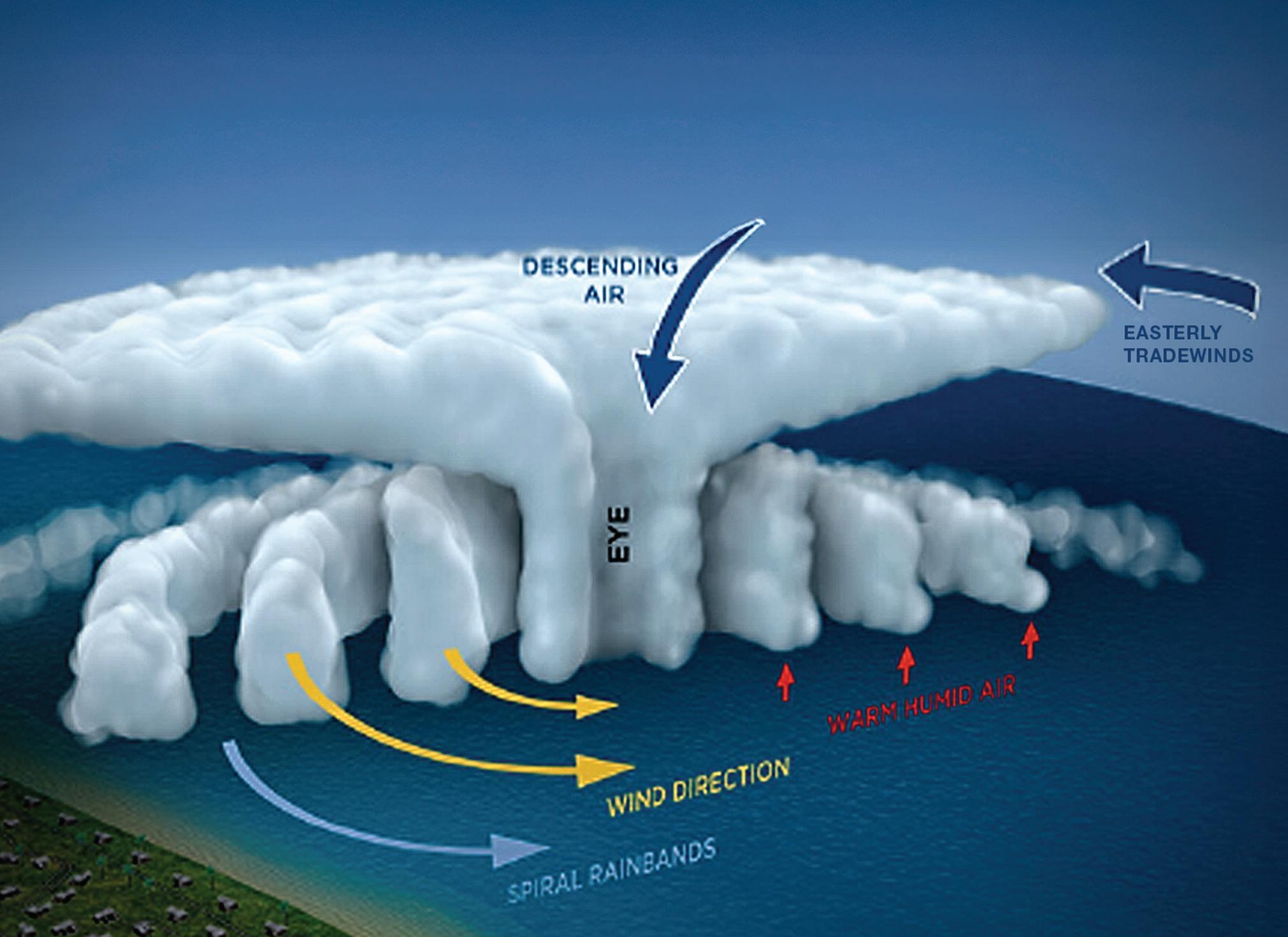
Center: The vertical axis of a tropical cyclone, usually defined by the location of minimum wind or minimum pressure.
El Niño: The abnormal weather pattern caused by warmer-thannormal water in the central and eastern Pacific along the equator. When the tropical Pacific is warmer than normal, winds at upper levels of the atmosphere (about 30,000 feet) in the tropical Atlantic are stronger than normal, which tears apart hurricanes as they’re forming. The strength or weakness of the El Niño pattern can help determine the severity of a hurricane season.
Eye: The relatively calm area in the center of a hurricane. It can range from 5 miles to more than 50 miles wide.
Eyewall: A doughnut-shaped zone of the highest winds and heaviest rain surrounding the eye.
Feeder Bands: Thunderstorms that spiral into and around the center of a tropical system. A typical storm may have three or more bands, usually 40 to 80 miles apart.
Gale Warning: According to the National Oceanic and Atmospheric
Administration, this is a warning that indicates 1-minute sustained surface winds between 39 mph and 54 mph.
High Wind Warning: NOAA issues this warning when 1-minute average surface winds of 40 mph or greater last for 60 minutes or longer, or winds gusting to 58 mph or greater, regardless of duration, are either expected or observed over land.
Hurricane Warning: Issued when hurricane conditions — winds of 74 mph or greater — are expected within 36 hours.
Hurricane Watch: Issued when hurricane conditions — winds of 74 mph or greater — are possible within 48 hours.
Landfall: When the surface center of a tropical cyclone intersects with the coastline.
La Niña: This is the opposite of El Niño, and is marked by cooler-thannormal eastern Pacific waters. This

pattern can contribute to an increase in Atlantic tropical activity by weakening wind shear, which enables storms to develop and intensify.
Major Hurricane: A storm with winds of 111 mph or higher.
Right Front Quadrant: In our hemisphere, this is the most destructive part of a hurricane, usually having the strongest winds, roughest seas and highest storm surges. This section of the storm is located in the eye wall to the right of the eye, based on the direction in which the storm is traveling.
Small Craft Advisory: A type of wind warning issued by the National Weather Service when winds have reached — or are expected to reach within 12 hours — a speed marginally less than gale force, 24 to 38 mph.
Storm Surge: This occurs when ocean water is pushed toward the shore by the force of the winds swirling around the storm. When this advancing surge combines with the normal tides, water levels may increase by 15 feet or more.
Tropical Cyclone: These rotating, organized systems of clouds and thunderstorms originate over warm tropical or subtropical waters and are characterized by low atmospheric pressure, high winds and heavy rain.
Tropical Depression: This type of storm forms when a low-pressure area is accompanied by thunderstorms producing a circular wind flow with maximum sustained speeds of less than 39 mph.
Tropical Disturbance: An area of thunderstorms that maintains its intensity for at least 24 hours.
Tropical Storm: A warm-centered, low-pressure circulation with highest sustained winds between 39 and 73 mph.
Wind Shear: Upper-level winds that can blow the tops off hurricanes and prevent vertical development, weakening or destroying them.


Category
Barometric
(MPH)
Very dangerous winds will produce some damage
Possibility of getting struck by flying or falling debris that could injure or kill
Older mobile homes (pre-1994) could be destroyed, especially if they are not anchored properly
Some poorly constructed homes can experience damage
Some buildings’ roofs and siding coverings could be removed
Large branches of trees will snap and shallow-rooted trees will topple
Extensive damage to powerlines and poles. Power outages for a few days
965-979 96-110
Extremely dangerous winds will cause extensive damage
Substantial risk of injury or death to people, livestock, and pets due to flying or falling debris
Older mobile homes (pre-1994) have a very high chance of being destroyed. Newer ones are at risk
Some poorly constructed homes have a high chance of damage
Unreinforced masonry walls can collapse
Many shallow-rooted trees will be snapped or uprooted
The Saffir-Simpson Hurricane Scale rates storms by Categories 1 through 5 based on their intensity. These categories may change as a hurricane becomes stronger or weaker during the course of the storm.
Devastating damage will occur
High risk of injury or death to people, livestock, and pets due to flying or falling debris
Nearly all older mobile homes (pre-1994) will be destroyed. Most newer mobile homes will sustain damage
Poorly constructed homes can be destroyed by the removal of roof and exterior walls
High percentage of roof and siding damage
Many shallow-rooted trees will be snapped or uprooted

Catastrophic damage will occur
Very high risk of injury or death to people, livestock, and pets due to flying or falling debris
Nearly all older and newer mobile homes will be destroyed
Catastrophic damage will occur
Very high risk of injury or death due to flying or falling debris even if indoors
Almost complete destruction of mobile homes
Poorly constructed homes’ walls can collapse and roof structures can be lost
High percentage of damage to top floors. Steel frames can collapse
Most trees will snap or uproot and power poles will be downed
High percentage of homes will be destroyed
High percentage of buildings will be destroyed
Nearly all trees will snap or uproot and power poles will be downed
Near-total power loss is expected with outages that could last for days to weeks
Electricity and water will be unavailable for days to weeks after the storm
Power outages will last for weeks to possibly months. Most of the area will be uninhabitable for weeks
Power outages will last for weeks to possibly months. Most of the area will be uninhabitable for weeks to months
Hurricane Debby (2024)
Hurricane Sally (2020)
Hurricane Jeanne (2004)
Hurricane Helene (2024)
Hurricane Ian (2022)






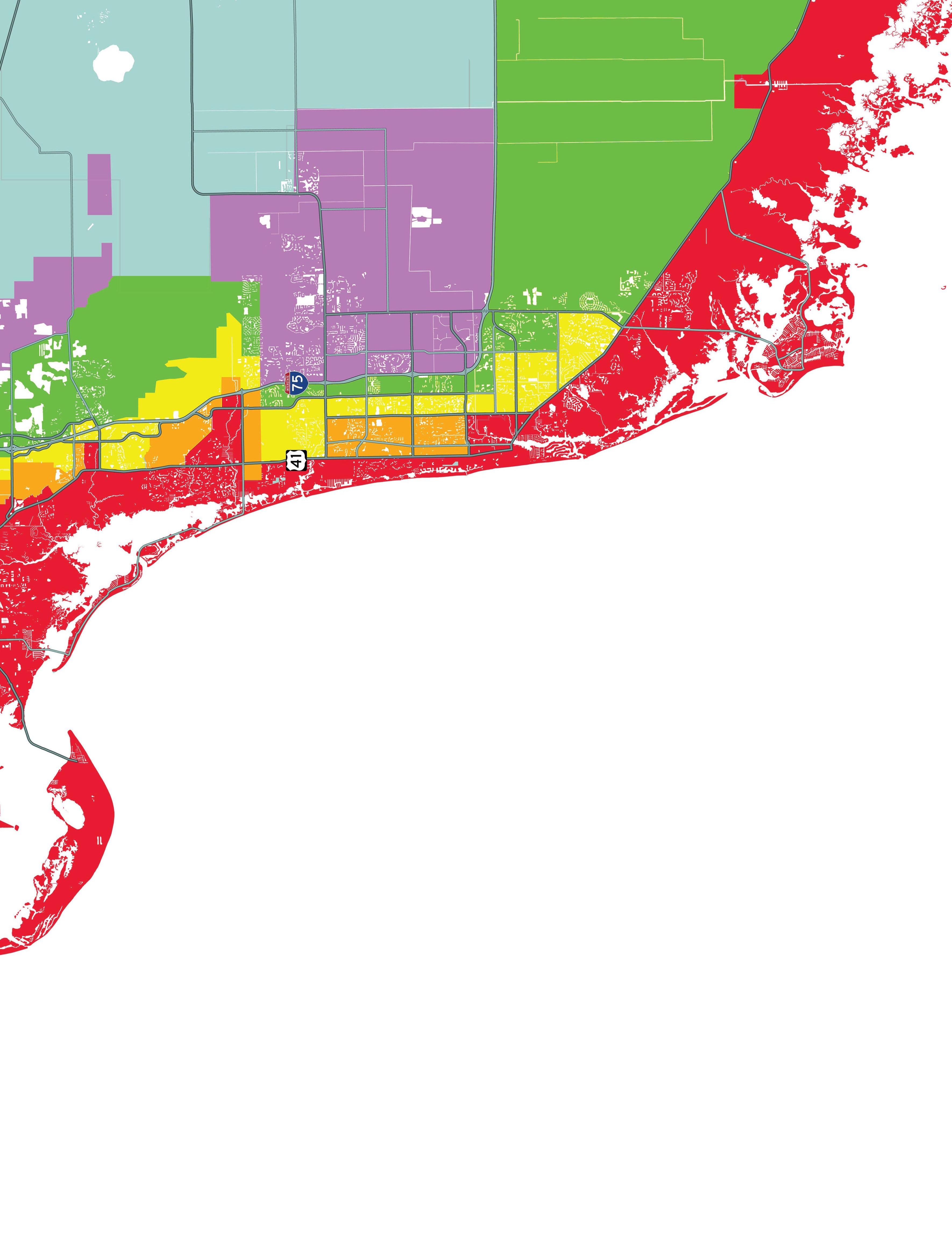
is a less vulnerable area. Wellprepared and well-protected buildings should be safe in all but catastrophic events. Wind, including tornadoes, poses the most significant danger in Zone E.
is one of the least vulnerable areas. Well-prepared and well-protected buildings should be safe during most storms. However, if evacuations are required, the safest option may be to travel to the East Coast.
is vulnerable to hurricane impacts. A large or powerful hurricane from the Gulf may require evacuations for surge or wind. Wind can pose a danger to unprepared or poorly constructed homes.
is very vulnerable and will experience significant impacts from land-falling storms. Evacuation will often be required for a hurricane coming from the Gulf. Winds in exiting storms may also require evacuation. Zone B is still vulnerable to potentially fatal levels of storm surge and some wave action. A B C D E
is most vulnerable to hurricanes and will be first to be impacted by a land-falling storm. Evacuation is often required for any named storm coming from the Gulf and it also may be necessary for exiting storms. Potentially fatal storm surge and large, crashing waves are the most extreme dangers.

SOURCE: Lee County Emergency Management. For more information, use your phone to scan this QR code:
High winds, flying debris and relentless rain can compromise your home’s first line of defense. If your roof has suffered storm damage, fast action is critical. Our expert team specializes in hurricane repairs, emergency tarping and full roof replacements— ensuring your property is secure before the next storm rolls in.




By Rick Scott U.S. Senator from Florida and Former Governor
Last year, Florida tied its record for the most hurricane landfalls in one hurricane season. We saw widespread devastation as Hurricanes Debby, Helene and Milton made landfall and the tornadoes they brought swept across our state. Debby brought recordbreaking flooding, Helene caused billions in damage and just weeks later, Milton made landfall as one of the strongest hurricanes to come out of the Gulf of America in decades, spawning the largest number of tornadoes to hit our state in a single day.
These storms hit Florida families and the entire Southeast hard, leaving an aftermath of heartbreaking destruction. But Florida is resilient, and our communities always come together to get back on their feet as quickly as possible.
As governor and as your United States Senator, I’ve seen that recovery happens quickest when our federal government works hand-in-hand with state and local partners. It’s why, as Senator, I’m fighting every day to make sure the federal government shows up and Florida families get everything they need to prepare for and recover from any severe
weather. Last year, I was proud to fight for the passage of the Disaster Tax Relief Act to provide disaster-loss tax relief; the Fishery Improvement to Streamline Untimely Regulatory Hurdles post Emergency Situation Act (FISHES Act) to support our fishing communities impacted by disasters; and secure block grant authority for the United States Department of Agriculture (USDA). But we aren’t done yet. I’m continuing my fight to make USDA’s block grant authority permanent so farmers can receive quick relief. I am also working to pass the SBA Disaster Transparency Act, which will increase transparency of the Small Business Administration’s Disaster Loan Account.
While I’m fighting to ensure our federal government is prepared, it’s important for your family to be prepared, too. Last season, we saw how hurricanes can be deadly not just where they make landfall, but all across our state, as they bring storm surge, heavy rain, high winds and tornadoes with them. We must take any storm and the deadly side effects that come with it seriously. Preparedness saves lives, and making a plan now can make all
the difference in keeping you and your loved ones safe. Don’t wait—now is the time to visit ready.gov to create a personalized emergency plan.
Preparing early gives you peace of mind and the chance to secure vital supplies like food, water, flashlights, batteries and other necessities, which can sell out in the days before a storm hits. Early preparations also give you the time to revisit your plan and make sure that it’s still the best approach for you and your family.
Whether you’re new to the Sunshine State or you’ve spent your whole life here, we can never let our guards down or underestimate severe weather. In case of a storm, stay tuned to your local news reports—such as WINK News, The Weather Authority—and listen to the advice of local officials. As I always say, you can rebuild your home, but you cannot rebuild your life.
Don’t wait—get prepared and make a plan TODAY.
As always, my team stands ready to help any Floridians who need help with federal agencies through our website, rickscott.senate.gov, or by contacting one of our offices in Washington, D.C., and throughout the state.

THE WINK WEATHER TEAM AND THE WINK LIVE DOPPLER 3X STAY ON TOP OF THE STORM TO HELP YOU STAY SAFE
The very active 2024 Atlantic Hurricane Season was one we will not soon forget, with wide-ranging, destructive impacts from the Gulf to the Southeast and even the Midwest. Thankfully, the WINK Weather Team was with you every step of the way with updates 24/7 to keep you and your family safe.
Southwest Florida experienced three storm surge events from Debby, Helene and Milton in just a two-month span between August and October. Storm surge is the abnormal rise in saltwater level during a storm, measured as the height of the water above the normal predicted astronomical tide. Storm surge height is highly dependent on the storm’s track, intensity, size and speed (to name a few factors).
Florida’s hurricanes last year were a continued reminder that you don’t necessarily need to see the direct landfall of a hurricane to experience significant impacts, especially depending on what part of the storm you’re in. For example, in reference to Southwest Florida, the northern and western parts of hurricanes
often contain a lower storm surge threat, but greater freshwater flooding potential from persistent bands of heavy rain. By contrast, the southern and eastern part is where you find the threat of storm surge and saltwater flooding from the Gulf. Why is that? Simply put, it’s all about wind direction — hurricanes rotate counter-clockwise in the Northern Hemisphere. So when a hurricane makes landfall in Southwest Florida, the wind is coming in from the land on the northern half of the storm and blowing in directly from the Gulf on the southern half.
Amazingly, the top three highest water levels measured for the city of Fort Myers since 1965 have occurred in just the last three years. For Charlotte County, Helene and Milton brought the highest storm surge in recent memory to the area; even greater than Charley and Ian. One of the most important devices we use during surge events is a tide gauge. It allows us to see when the water is rising, leveling off and eventually going down. During WINK’s hurricane coverage, we frequently displayed all local tide








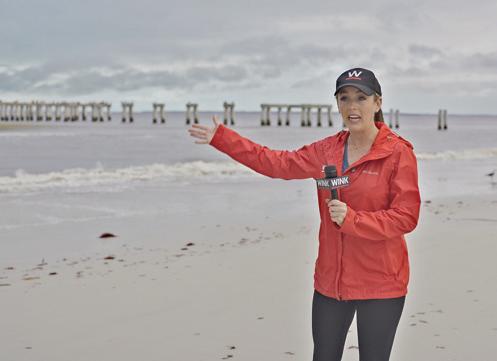



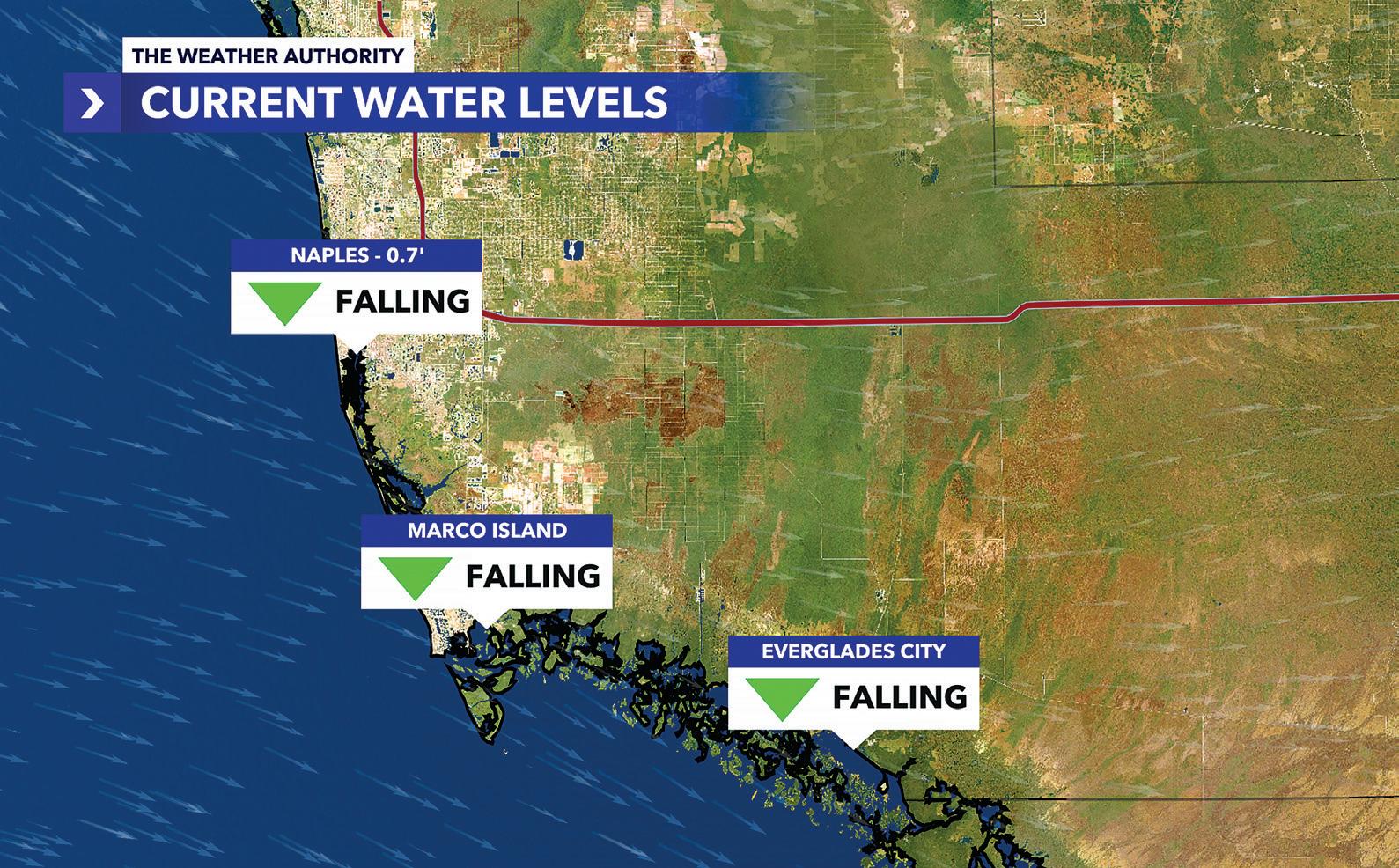
sensors so that you knew exactly what was happening along our coast at all times.
We also used our extensive Southwest Florida live camera network to give you a visual alongside the data as the water was rising. Although progress has been made in increasing the number of tide gauges in Southwest Florida, especially in Lee County since Hurricane Ian, more are needed. After Hurricane Helene, with the assistance of our local representatives, we sent a letter to NOAA and formally requested more

tide gauges along our coast, especially in Charlotte County. Lee County has invested in its tide gauge network, and it already delivered valuable information during Hurricanes Helene and Milton. The WINK Weather Team will continue in the months and years ahead to push for resources that our community needs, especially when hurricanes threaten.
Another historic event during the 2024 season was the tornado outbreak across southern Florida that occurred before Hurricane Milton made landfall. The storm produced
at least 46 tornadoes across the state, a new Florida record for the most in a single day. Nineteen of those twisters occurred in the Southwest Florida WINK viewing area, also a local record. What was unusual about several of these tornadoes was their size, intensity and duration. Lakeport in Glades County was devastated by an EF-3 tornado with winds up to 140 mph, the first time an EF-3 tornado has ever occurred in Southwest Florida since record-keeping began in 1950. Another notable and destructive tornado was an EF-2 tornado that

SHUTTERS
Accordions
Corrugated Panels
Aluminum Roll-Ups
Hurricane Screens
Bahamas
Colonials
WINDOWS
Single & Double Hung
Horizontal Rollers
Awning
Casement
Picture
Architectural
DOORS
French
Sliding
Fiberglass

crossed from Fort Myers into North Fort Myers. While on the ground for over 30 minutes and 16 miles, it grew as large as 1/4 mile wide with winds up to 132 mph. Thankfully, no one was injured.
The WINK Weather Team was able to keep our viewers safe because of WINK Live Doppler 3X … Southwest Florida’s Most Accurate and Powerful Radar. The instant storm rotation began, our radar was able to detect it with incredible clarity and pinpoint

accuracy at neighborhood and even street level. One of the valuable tools our Dual Polarization Radar has is called “correlation coefficient.” That feature identifies what’s rain and what’s not rain in the atmosphere, while operating at one million watts of power. Why is that helpful? If we find radar signatures that show up different from rain, while matching up with an area of strong rotation, we can deduce that a tornado is on the ground and launching debris hundreds
and thousands of feet in the air. That tornado “debris ball” becomes evident on WINK Live Doppler 3X with a color of blue, surrounded by areas of red (rain). Multiple debris balls were indicated in the outer bands of Hurricane Milton by our WINK Weather Team, leading to advanced warning on the air, even ahead of the National Weather Service. The safety of you and your family will always be our greatest mission and highest priority. Every storm. Every time.
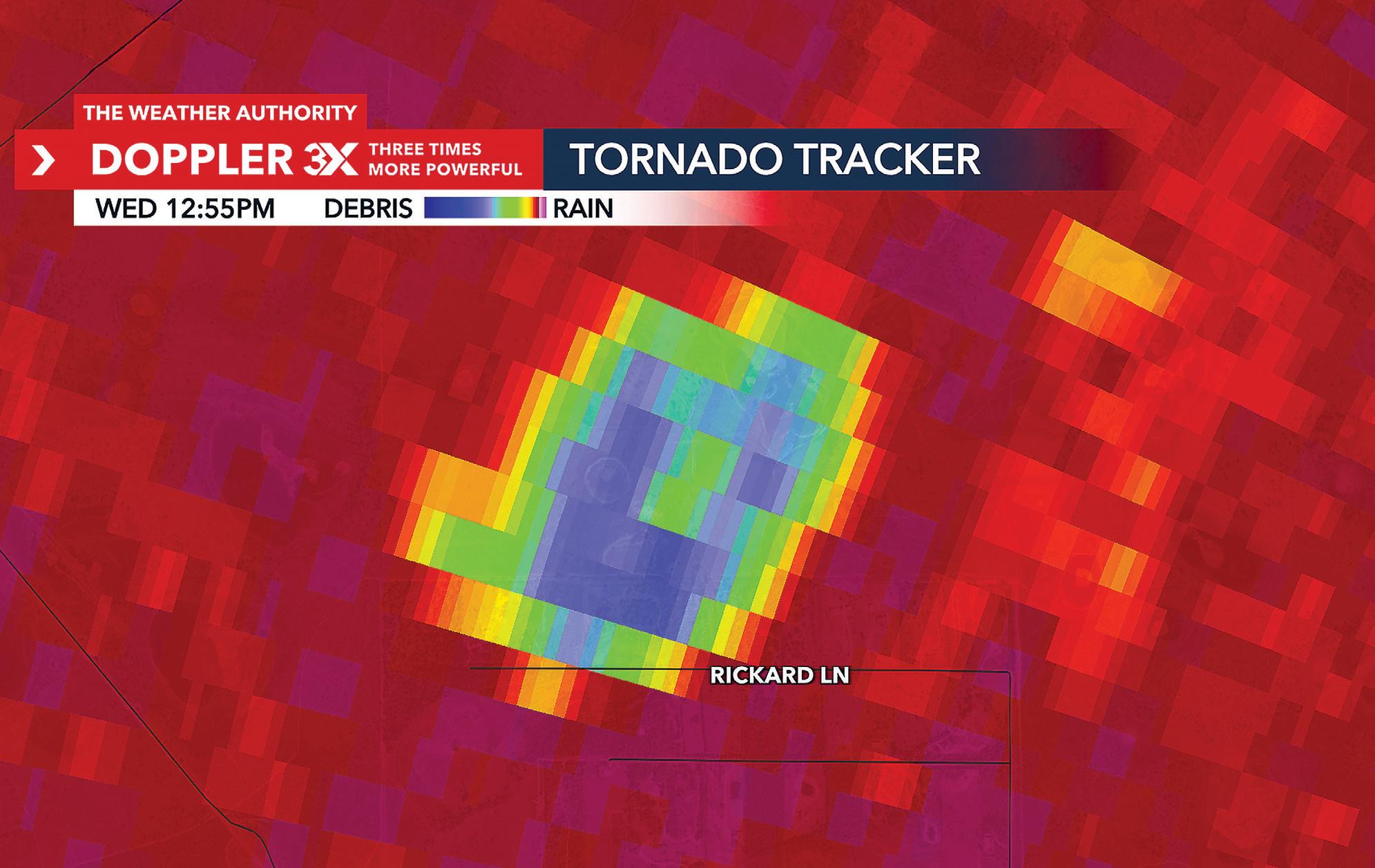



“Since 1988, your complete satisfaction has been my first and foremost priority.”
Tony, Sr. Founder & Owner








More than 35 years in Southwest Florida and over 30,000 satisfied customers. A level of old-world craftsmanship, attention to detail and professionalism on every job, large or small–and a sterling reputation built one satisfied customer at a time.
We do all custom work in our own machine shop. Granite tops, cabinets, doors, we build to fit–no shortcuts. We offer a lifetime warranty on all the products we make for as long as you own your home.
No deposit required on any job that can start right away!


Based on feedback received during the 2024 hurricane season, the National Hurricane Center will be issuing an experimental cone graphic for 2025. This experimental graphic will now include depictions of inland tropical storm and hurricane watches and warnings in effect for the continental United States. In addition, the legend for each graphic will include a symbol to depict where a hurricane watch and tropical storm warning are simultaneously in effect. That symbol will be denoted by diagonal pink and blue lines.
In a news release, the NHC said the new graphic for 2025 is based on recommendations from social science. It is hoped that the addition of inland watches and warnings to the cone graphics will help better communicate wind risk during tropical cyclone events without overloading the existing cone graphic with too many data layers.
The NHC noted this will be considered an “experimental cone graphic” and that the current operational version of the cone graphic will continue to be available. In addition, due to the need to compile inland watch and warning information, the experimental graphic may not be available as soon as the current graphic. However, it should be available within 30 minutes of the advisory release, according to the NHC.


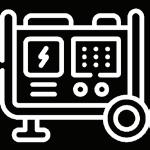






Have a backup plan for water in case you lose power, have damage to your equipment, or your well is compromised.
Learn where your electrical and water shutoffs are and how to use them.
Check if your well is able to be run off a generator.
Secure loose items around your water treatment equipment to help prevent damage.
Whole Home MASTRO Osmosis available with up to 500 gallons of clean water storage.
A microbiological filter provides clean water for drinking and cooking, even during a boil water notice.




Electrical hazard: Stay away from flooded pumps and other equipment.
After power is restored, flush systems and reset controls.
A change in look, smell, or taste of water can indicate a compromised well.
If your well or septic system has been damaged have a qualified professional:

Clean pump and turn it on

Flush out your well

Disinfect your well

Consider testing water before use
Ensure your system is clean and functional with regular service and maintenance. Serving Lee and Collier since 1983 Schedule an estimate or service today:
Storm surge is as deadly as it is often overlooked by Southwest Florida transplants and area natives alike.
It’s easy to associate storm surge—one of the most unpredictable aspects of a hurricane—with typical flooding or underestimate its reach, not realizing how fast and forceful the water can be. That unpredictability and devastating power can lead to catastrophic consequences, making it imperative to understand its nature and the necessary precautions to safeguard lives and property.
Storm surge is a robust rise in water levels caused by hurricane winds pushing ocean water inland. Unlike a tsunami, which comes from seismic activity and moves fast across the ocean, storm surge is a sustained, forceful flooding event that can last for hours. It doesn’t just affect beachfront properties; water can travel miles inland, overwhelming neighborhoods and cutting off escape routes.

“We’re talking about very rapidly moving, very strong, powerful water,” Jennifer Hubbard, warning coordination meteorologist at the National Weather Service in Tampa, said. “If it gets to the point where it’s inundating your home, that is putting your life in danger.”
Following evacuation routes beforehand can eliminate the personal risk. Once that option is gone, other evacuation routes are also likely to wash away.
“In the situation of a hurricane, first responders cannot go out and get you help until those tropical storm-force winds have died off,” she said. “You could be putting yourself in a [bad] situation and be stuck in it for hours.”

It is a risk mitigation service. It’s someone checking on your home while you are away. So much can happen in your absence, and you need to know about it. If you are away from your Southwest Florida home for stretches of time, you need to have someone checking on your unoccupied place, advocating for you and your best interests.

Home Watchers that are Accredited Members of the National Home Watch Association:
• Have all passed criminal background checks.
• Carry the correct insurance and bonding in order to protect the client and their property.
• Receive ongoing education.
• Act as their client’s advocate during their absence.
● FOLLOW HOMEOWNER’S ACTION PLAN
● TAKE TIME & DATE STAMPED PICTURES / VIDEOS FOR DOCUMENTATION
● COMMUNICATE WITH HOMEOWNER
● PROPERTY INSPECTED FOR STORM DAMAGE
● CONTACT HOMEOWNER
● SEND HOMEOWNER PICTURES / VIDEOS OF ANY OBVIOUS DAMAGE

Companies represented in photo: 1-Stop Home Watch Service; Alpha Home Watch and Handyman Services; Always There Home Watch; Coastline Cottage Home Watch; Deep Creek Home Watch; Eagle View Homewatch; Elite Home Watch Plus of SWFL; Estates Neighborhood Home Watch; Family Home Watch Services; Guardian Angel Home Watch of SWFL; Home Watch of SW Fla.; Homewatch Services Etc.; Hudnall's Home Check Services; Islander Home Watch Services; J&L Home Watch; King’s Coastal Home Watch; Leddy Defense Pro Home Watch Services; Naples Area Home Watch; North & South Naples Condominium HomeWatch; Nosey Neighbor Home Watch; Paradise Coast Home Watch; Pelican Patrol Home Watch Service; Pelican Pro Home Watch; Scenic Homewatch & Services; Sentinel Homewatch; Sun Seeker Home Watch; Sunshine Sentry Home Watch; Sunshine State Residential Inspections; TE Reliable Home Services; Trusted Home Watch of Naples; Until You Return Homewatch.
Evacuation zones vs. flood zones
You may not have bought that house on the beach, but you are not automatically safe from floods just because you live outside a designated flood zone.
That’s because those flood zones relate to potential flooding from rainfall and water bodies such as lakes, rivers and canals. Evacuation zones, on the other hand, are based on storm surge risk and indicate which areas should evacuate when a hurricane approaches.
Visit floridadisaster.org/knowyourzone or check the map on page 22 to find out which evacuation zone your home is in. If evacuation orders are issued, follow them immediately.
“It’s far more prudent to follow the evacuation route and get yourself out of that risk altogether, rather than rolling the dice and taking a chance,” Hubbard said.
Even people in E-labeled zones, which means a low chance of flooding occurring, aren’t exempt from risk and damage during a severe storm, Hubbard said.
“That much rainfall anywhere, even in an area that’s not going to be typically prone to flooding, can still cause flooding,” she said. “Be aware of the fact that an E doesn’t mean you’re floodproof if you are in what’s considered a no-flood zone.”


Just as swimsuits and flip-flops are unofficial requirements of Southwest Florida living, preparing early for hurricane season should be too.
See “Preparing Your Family” on page 42 for steps to begin taking now, including checking your evacuation zone, planning where you’ll go and preparing a supply kit.
Above all, stay informed from reputable sources, not social media speculation that could be misleading.
“Make sure that when you are getting those forecast updates, you’re looking at official information from a trusted source like the WINK meteorologists,” Hubbard said. “Or the official source of all
[severe weather] information, National Weather Service.”
Above all, don’t underestimate the force of storm surge and its risks. Following evacuation orders, preparing in advance and taking post-storm safety precautions are critical steps in protecting lives and property.
“We prepare for the worst and hope for the best,” Hubbard said. “Hopefully, (if you evacuate), you will have a home to come back to that hasn’t been touched by storm surge. But it’s not something you want to be taking the risk of, and then the worst happens.”
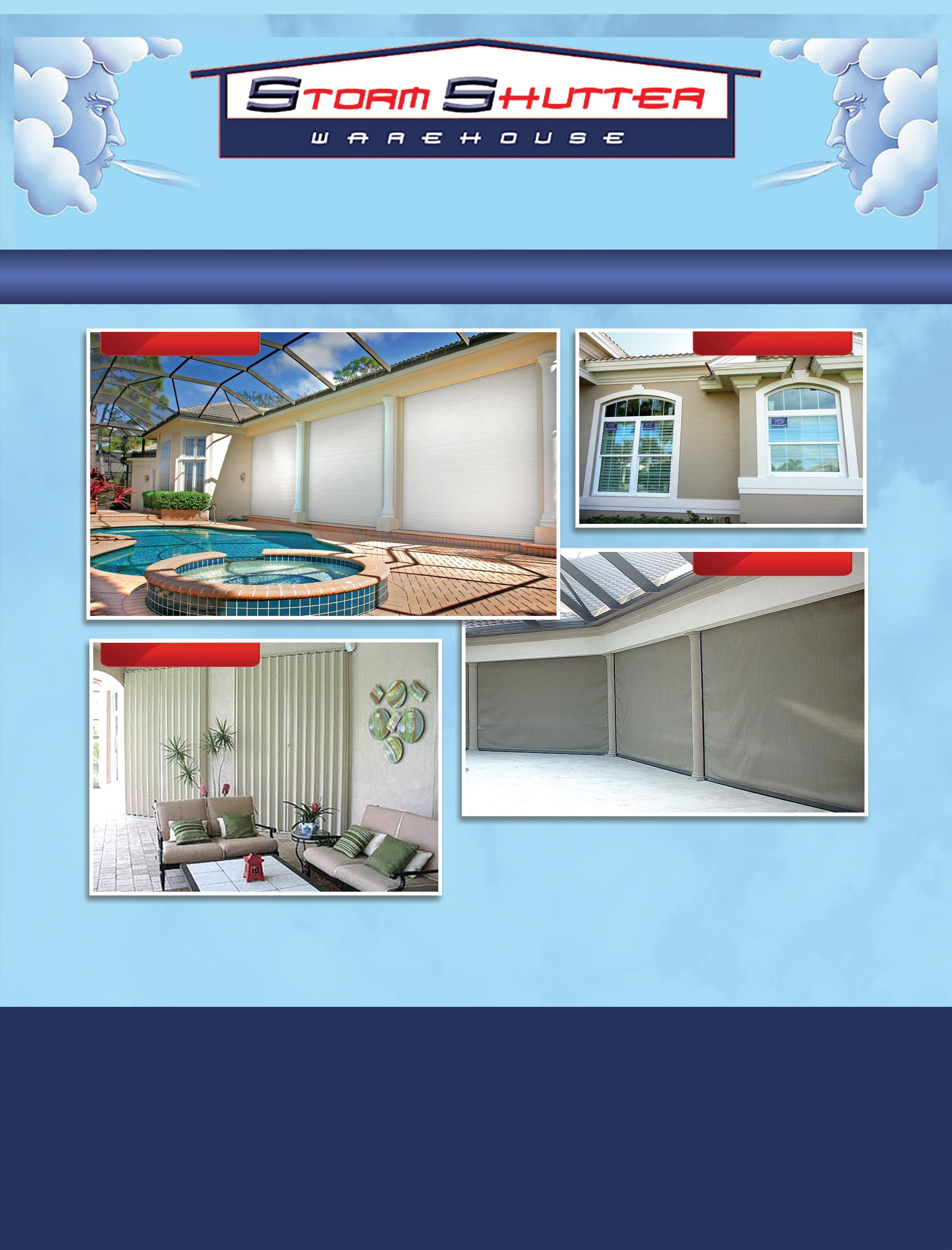


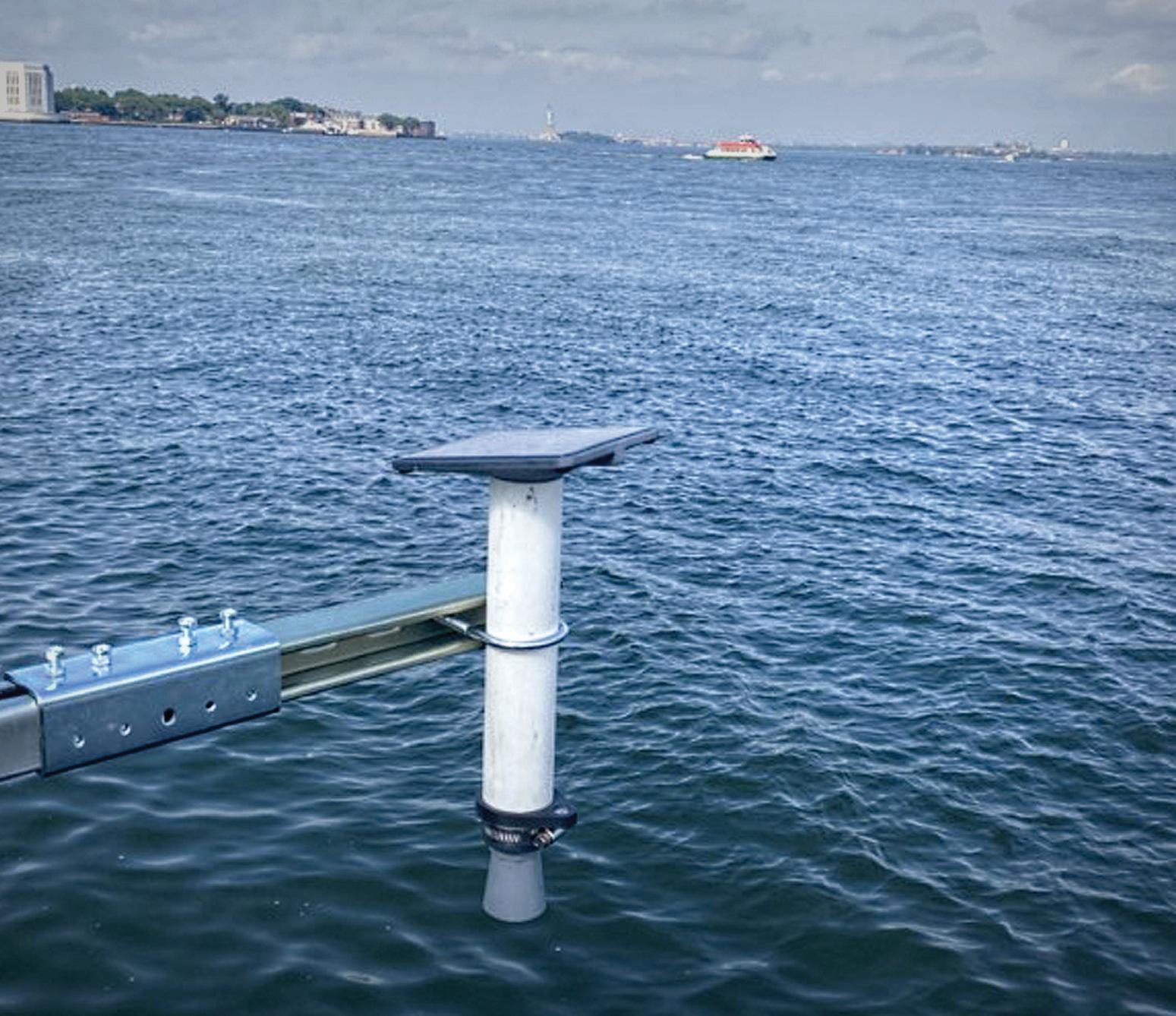
An often overlooked tool in the fight against flooding and storm damage is the tide sensor. These sensors play a vital role in helping keep our coastal communities safe, and they’re essential in understanding and reacting to rising waters during storm events.
Tide sensors are sophisticated devices placed in waterways and along coastlines that measure the rise and fall of water levels. Continuously monitoring tidal conditions, these sensors provide real-time data on water levels—which can help you prepare for hazardous conditions, especially during storm surges and extreme tides.
Given the dangers of storm surges, tide sensor data can provide early warnings when a surge is imminent. This can help people evacuate or secure property before the

water reaches dangerous levels. And that can save lives and minimize damage.
“Having that data during a hurricane or tropical storm can tell us whether the worst storm surge is still coming, if it has leveled off, or it is starting to go back down,” says Matt Devitt, WINK News Chief Meteorologist. “Knowing what the surge is doing can give you peace of mind or it can save your life, because when the water is still rising, that’s very serious and potentially life-threatening.”
Southwest Florida’s beautiful coastline also comes with a higher risk for flooding, even during routine high tides. Using tide sensor data to know when and where floods are most likely to occur, you can make critical decisions like relocating vehicles or
moving to higher ground before it’s too late.
“Historical comparisons of tide sensor data can give you an idea of when your property is susceptible to flooding,” Devitt says. “You can compare it to the predicted surge for a threatening storm and make a better decision about whether to evacuate and how to protect your property.”
Hurricane season preparation isn’t just about having supplies ready— it’s also about staying informed to help keep your family and property safe. To stay up-to-date on the potential for dangerous flooding during a storm, tune into WINK News, The Weather Authority. You can also monitor the NOAA tide sensor network online at water.noaa.gov.
To view the Lee County tide sensor network, visit dashboard. hohonu.io.


• DON'T rely on others to activate your rolling shutters
• SAVE TIME: reduce time spent to valuable TIME SAVED
• BE PREPARED: Sudden weather changes can happen 24/7!
• SAVE MONEY: Do it yourself
• NOW YOU CAN ...BEFORE YOU COULDN'T: Eliminate a stressful task to become a "Walk in the Park"!




















AHT has been making the best hurricane protection right here in Southwest Florida since 2003.
•Protection: Strong barrier against the wind and flying debris.
•Security: Deter burglars and intruders.
•Energy Efficiency: Reduce energy costs by blocking out sunlight and reducing heat gain in the summer.
•Storm Preparedness: Offers peace of mind and helps you feel more prepared in the event of a storm.
•Increased Property Value: Desirable feature for potential buyers.
•Installation & Repair
•Repair of All Brands
•Motor Repair or Replacement

•Hurricane-Impact Rated Windows & Doors



Even the best preparations can go astray when disaster strikes. If your family members are not together when a hurricane hits, do you have a way to get in touch with each other? Do you have a designated meeting spot? What if your area is evacuated? It’s critical to create a plan ahead of time so that everyone will know what to do, how to find each other and how to communicate in an emergency.
• Choose the same person for each family member to call or email, so that everyone has a single point of contact. During or after a hurricane, it might be easier to reach someone who is out of town or outside the state.
• Make that contact person the “ICE” (“In Case of Emergency”) contact in your cell phone. If you’re injured, emergency personnel often will check your ICE listings to reach out to someone you know. Notify the person you’ve listed that he or she is your emergency contact.
• Be sure every member of your family knows the emergency contact’s phone number and has a cell phone or a prepaid phone card to call that person.
• Text, don’t talk, unless it’s an emergency. It may be easier to text and you won’t tie up phone lines for emergency workers. Text messages can often get around network disruptions when phone calls can’t.
• Keep your family’s contact info and meeting spot location in your backpack, wallet or cell phone, or taped inside your school notebook.
• Designate someone from outside the area to be the primary contact for out-of-town relatives and friends to check on your well-being. In the aftermath of a hurricane, landlines and cell phone networks may be out of service for extended periods.
It’s important to be prepared and stay aware when hazardous weather threatens. A communication plan is
only one element of what you’ll need to have in place with your family when a hurricane is imminent. Get your family together well before hurricane season begins to establish a plan for how to respond to a natural disaster. Here are some ideas:
• Discuss the type of hazards that could affect your family.
• Understand your home’s vulnerability to storm dangers.
• Determine your evacuation route and destination. Plan to go to family or friends who live in safer areas. Use county evacuation shelters only as a last resort.
• Have an alternate plan if your friends are out of town, your primary evacuation route floods or other unforeseen circumstances arise.
• Put together a family communication plan as outlined above.
• Have a plan for what to do with your pets if you need to evacuate (see additional tips below).
• Review your homeowners and flood insurance policies and keep them with you in a secure, waterproof place. Waiting until the storm arrives is the wrong time to check if you have the proper insurance.
• Register any
individuals with special needs with your county’s emergency management office ahead of time.
• Create a list of prescription medicines that you will need to refill and take with you.
• Have non-perishable emergency supplies and food on hand.
• Prepare a disaster supply kit.

PREPARE YOUR PETS
You will need a plan for your pets, too. Consider two different pet emergency kits:
• In one, put everything your pets will need to stay where you are.
• The other should be a compact, portable version to use if you and your pets have to evacuate.
• For more information and a detailed list of disaster preparedness tips, go to aspca.org.











Supplies are a critical part of every family’s health and safety. Assemble the supplies you’ll need well in advance of hurricane season each year. It pays to be prepared.
When a storm is imminent, time to shop will be limited. If supplies are even available, you’ll have to scramble to find them. In recent hurricane seasons, many Southwest Florida residents faced shortages of plywood, batteries, flashlights, water, ice, generators and other storm necessities.
Every time a storm is predicted to make landfall near Southwest Florida, shopping lines are long, shelves are bare and stress levels rise. Supplies can be divided into several categories, but the essentials should be gathered ahead of time and kept easily accessible throughout the hurricane season.
These are the supplies you should always have on hand. Be sure to place the items that you will most likely need for an evacuation in an easy-to-carry container.
A minimum of one gallon of water per person per day. Keep at least a threeday supply per person on hand.
Additional water for food preparation and sanitation.
Bags of ice.
Partially fill plastic soft drink bottles, one liter or larger, with water and place them in the freezer. The bottles will freeze without cracking. If the power goes out, the frozen water will help keep the freezer cool, and when the ice melts, the water will be drinkable.
Fill up your car’s gas tank and portable gas canisters. Make sure those canisters are stored safely.
Keep cash handy. Banks may not be
open, ATMs may not be accessible and debit cards and credit cards may not be viable if power is lost.
GROCERIES
Baby formula
Bread
Crackers
Canned fruits
Canned juice
Canned meats
Canned vegetables
Dry cereal
Instant coffee and tea
Peanut butter
Quick-energy snacks
Ready-to-eat soups
MEDICAL SUPPLIES
First-aid kit for your home—for how to stock your kit, consult the American Red Cross at redcross.org.
If you have family members with special requirements, such as infants and elderly or disabled persons, remember to include items and supplies that may be unique to their needs. That can include setting aside anything from extra diapers and baby formula to special medications and a spare walker.


First-aid kit for your car
Insulin
Denture needs
Prescription drugs
(minimum two-week supply)
A supply of aspirin or non-aspirin pain reliever
Contact lenses and supplies
Eyeglasses, along with a spare pair, if you have one
Heart and high blood pressure medicine
Insect repellent
Itch-relief cream

Important telephone numbers
Record of bank account numbers
Family records (birth, marriage, death certificates)
Record of credit card account numbers and companies
Inventory of valuable household goods—with pictures, if possible
Copy of will, insurance policies, deeds, stocks and bonds
Copy of passports, social security cards and immunization records

Battery-operated radio or TV
Flashlight and lanterns
Extra batteries and extra bulbs
Lighter or matches for your grill
Antenna for your TV
Extension cords (heavy-duty and threepronged)
Manual can opener/utility knife
Plastic sheeting/tarps
Duct tape
Generator
Gas cans
Old towels for cleanup
Paper cups, plates and utensils
Plastic trash bags
Full propane tank
Charcoal and lighter fluid
Camp stove
Sterno fuel
Thermos for hot food
Coolers with ice for
cold food
Tree saw for cutting fallen limbs
Hand tools: knife, axe, pliers, screwdrivers and wrench
Hammer and nails
Fire extinguisher
Fix-a-flat
Mops, buckets and cleaning supplies









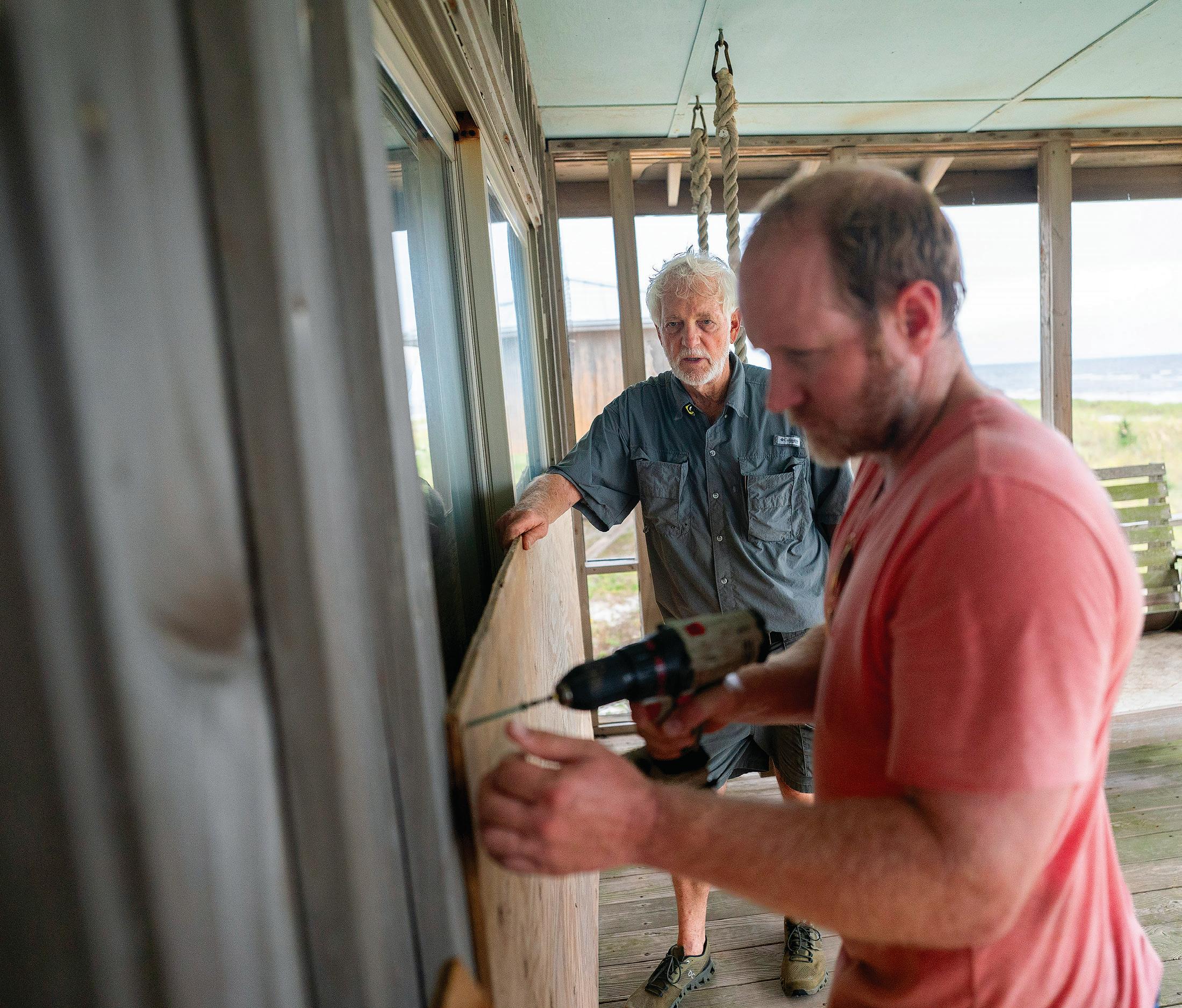
Preparing your home for a hurricane is vital. Regardless of size or location, there are precautions that all homeowners should follow to protect their home and property. That can include strengthening or updating your home’s structure, electrical system or plumbing. While the more complex jobs are best suited to licensed contractors, there are several precautions you can take on your own to prepare and protect your home.
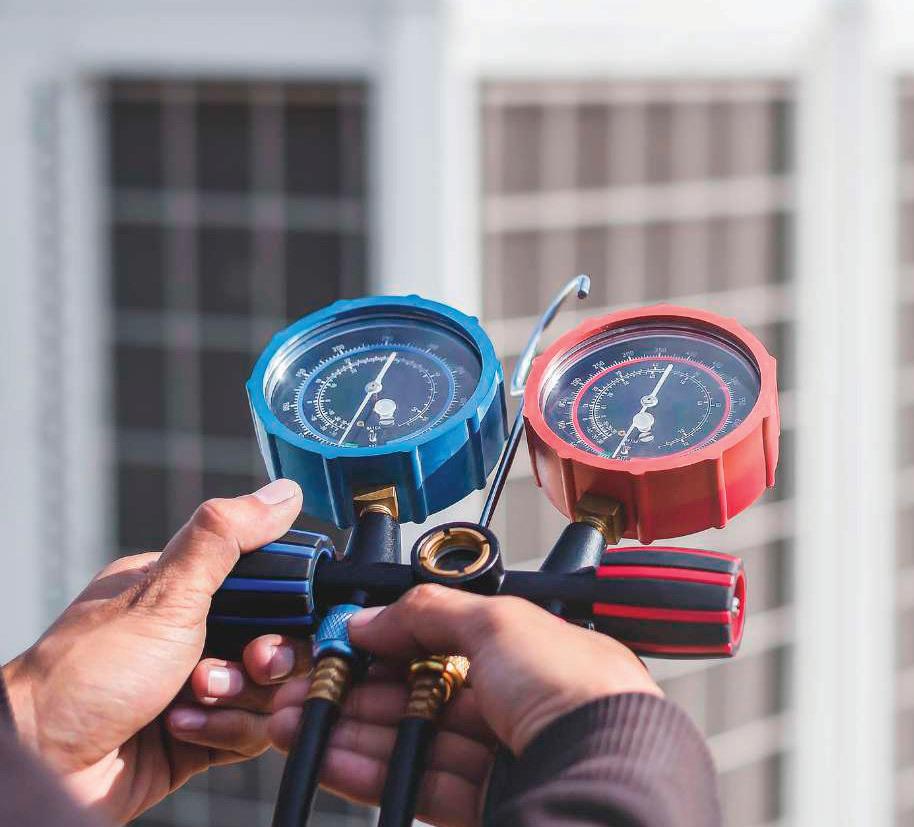





Installing storm shutters over all exposed windows and glass surfaces is the easiest, most effective way to protect your home from a variety of hurricane-related damage. Be sure to cover and protect every window, French door, glass door and skylight in your home. Manufactured storm shutters can be made of steel, aluminum or heavy-duty plastic. Properly constructed and installed plywood shutters can also provide significant protection from hurricane-force winds and debris.
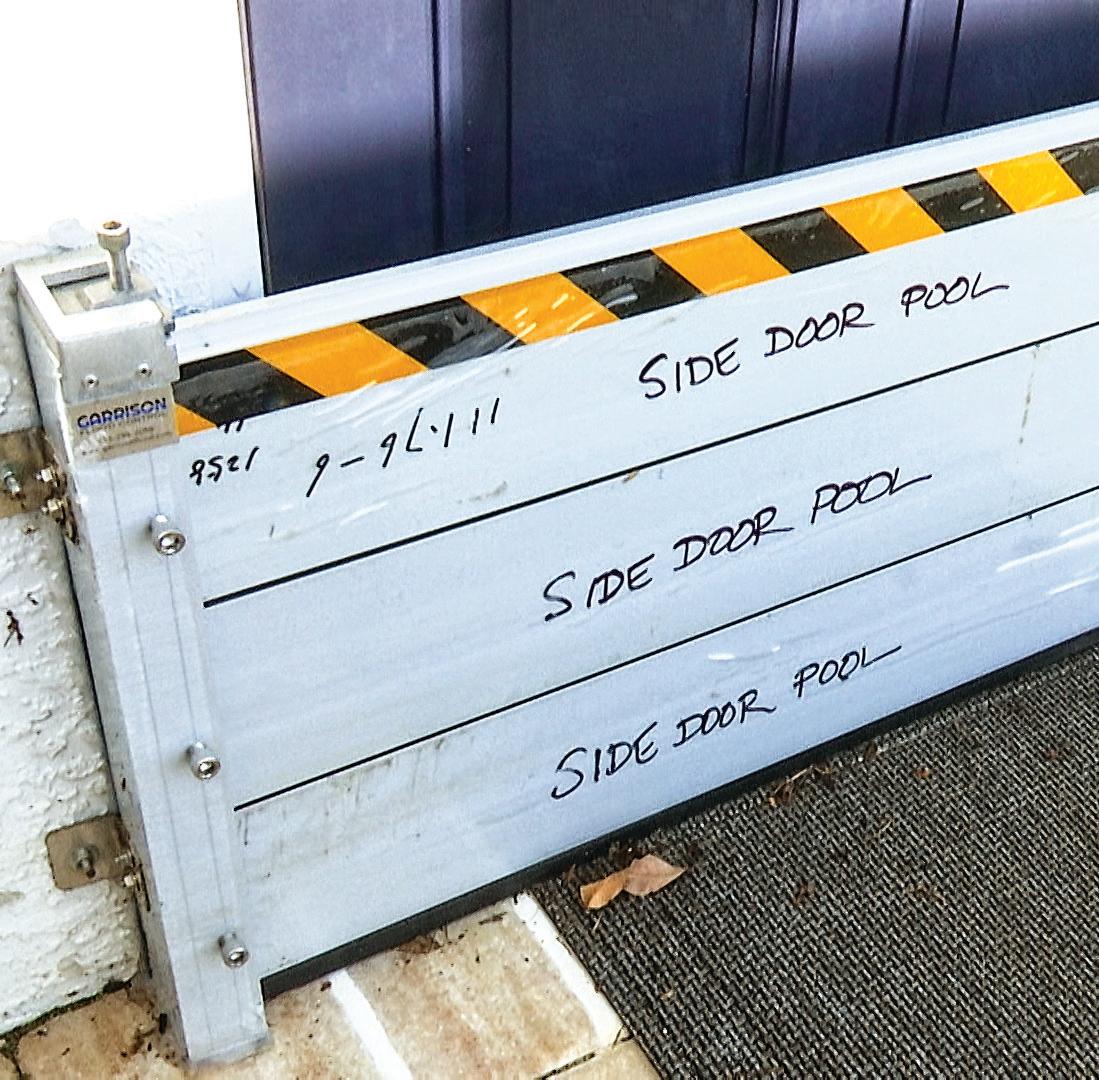

The bolts and pins used to secure double-entry doors (with one active door and one that is inactive) may be unable to withstand hurricane-force winds. When making your home hurricane-ready, check with a local building supply or hardware store to determine the bolt system to best reinforce your doors.
Hurricane-force winds can easily compromise double-wide garage doors, leaving your home vulnerable to more damage. Fortunately, some garage doors can be reinforced with retrofit kits found at building supply or hardware stores.
SPECIAL PRECAUTIONS
Mobile homes are especially vulnerable to a hurricane’s winds. Anchor your mobile home with over-the- ROOF
A residential roof is especially vulnerable to a hurricane’s high winds and debris, so proper roof construction is essential. An inspection by a qualified building professional can determine whether your roof needs reinforcement, and that small investment can save you from thousands of dollars in hurricane damage.
top tie-downs or frame tie-down straps. When a storm approaches, do your best to secure your home, then seek refuge with friends, relatives or at a public shelter. Even if it is securely anchored, do not try to ride out a hurricane in a mobile home under any circumstances. Always follow mandatory evacuation orders if they are issued.
Once you’ve securely anchored your mobile home, make sure to:
Pack breakables in boxes
Remove mirrors
Wrap mirrors and lamps in blankets and place them in the bathtub or shower
Install hurricane shutters or securely cover all windows with pre-cut plywood
Shut off utilities and propane tanks; disconnect electricity, sewer and water lines





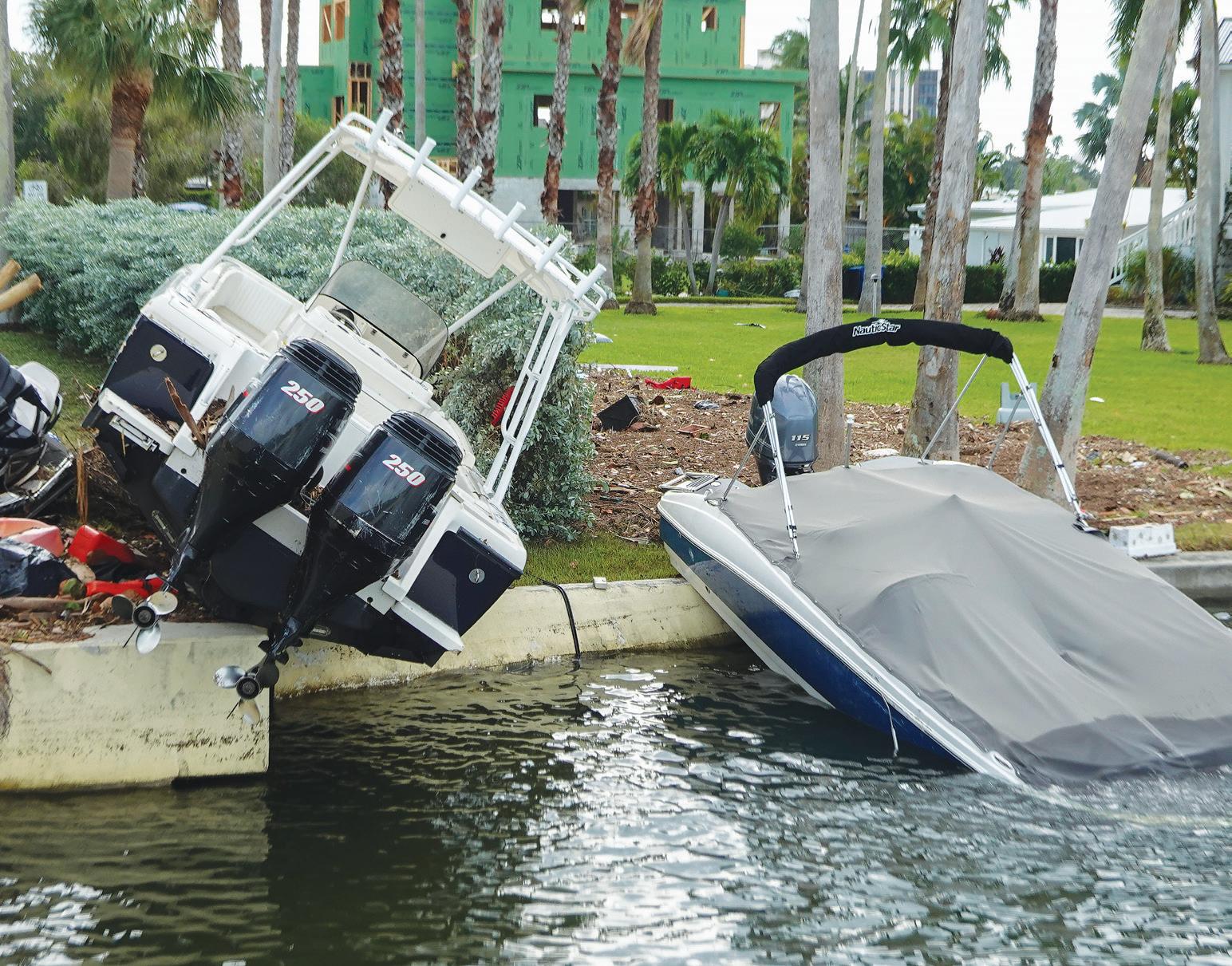
Southwest Florida’s abundant sunshine, waterways and beaches make it ideal for boat owners. But the many advantages provided by our geographic location also leave boats vulnerable to damage from hurricanes and tropical storms.
Regardless of the boat, the local boating environment or available storage options, every boat owner needs an action plan designed specifically to protect their craft. For the planning, safeguards and preparation needed to protect your boat before a storm arrives, follow these general guidelines.
Check your boat thoroughly to ensure it is in sound condition. Inspect the hull, deck hardware, rigging, ground tackle, machinery and electronics.
Check and double-check to ensure batteries are charged, bilge pumps are working, fuel tanks are full, fuel filters are clean, cockpit drains are free and clear, firefighting equipment is in operable condition and lifesaving equipment is accessible and in good shape.
Enhance the watertight integrity of your boat by reinforcing and sealing all doors, windows and hatches with waterproof duct tape.
Secure every item on your boat. Remove or secure all deck gear, portable gear, radio antennas, outriggers, chairs, deck boxes, cushions, bimini tops and side/canvas curtains, sails, boom, canister rafts and dinghies.
Inspect your boat’s deck hardware to be sure it is compatible with your mooring arrangements. Check the size and structural attachment of the primary chocks, cleats, bitts, bollards and winches. Being high-load/ high-stress points, they should have substantial backing plates secured with bolts of commensurate size.
Avoid chafing of mooring lines. A double neoprene hose arrangement has proven to be effective, successful chafing gear.
Ensure storm moorings have doubled lines, whether they’re dockside or elsewhere. Use a size larger than the normal lines for the second set, including spring lines at a dock.
Create a list of important phone numbers in your phone’s contacts, and keep a hard copy just in case. In-
clude contact numbers for your insurance agent, harbor master and marina facility, plus the United States Coast Guard and National Weather Service.
Buy all the materials you’ll need ahead of time. That includes additional lengths of mooring lines, screw anchors, fenders, fender boards, chafing gear and anchors.
Assemble a hurricane action plan specific to your vessel. If you plan to move your boat to a safer location, make sure you have sufficient warning at least 48 hours (and preferably 72 hours) before the storm will arrive. Rehearse your planned boat movement, including actually visiting the alternate dock or hurricane mooring/anchoring site, to know how long the trip will take and any obstacles you may encounter along the way.
Inventory all your boat’s equipment. Know the items that need to be removed from your boat and keep copies of your equipment inventory aboard the vessel and onshore. Take photos to document the current condition of your boat—inside and out— and keep those photos together with all your other records.
Make sure your insurance policy is up-to-date. Read and review the

policy thoroughly before the beginning of hurricane season. Most boat insurance policies include a great deal of helpful and advisory information about what boat owners should— and should not—do if they incur loss or damage to their vessel due to a hurricane or tropical storm.















A hurricane’s passage doesn’t mean all the dangers have passed. Remember to stay safe as you clean up and repair damage—and extend that focus on safety to your family, friends, neighbors and emergency personnel. Should you find yourself in a potentially dangerous situation, it’s always better to err on the side of caution.
After a hurricane, relief supplies and other types of aid will usually arrive as quickly as possible. In addition, special disaster teams will be sent to heavily damaged areas by insurance companies, state and federal agencies and many private relief organizations.
Depending on the severity of the damage, however, it might take several days for any help or assistance to arrive at a disaster site. Remember, assembling and loading the specific supplies needed for a particular area can take time, and the roads may be blocked by debris and unsafe to travel. Given the potential for a delayed response, it’s vital to ensure you have at least a three-day supply of ice, water and food to sustain you and your family until help arrives.





Regardless of its strength or duration, a hurricane can be a traumatic experience that takes a physical and emotional toll. For many, recovering after a hurricane can be the most difficult part of all.
After a storm, debris may be strewn across yards, roads and parking lots. Tidy neighborhoods before the hurricane might now be littered with fallen trees, limbs, gutters and wreckage. Homes and businesses might be damaged or destroyed. There may be no water, sewer, working electricity or telephone service. Without electricity, there will be no air conditioning or refrigeration. Damaged or debrisfilled roadways could be blocked or closed for a few days to several weeks.
A hurricane will affect everyone in some way. It can be difficult and stressful to return to your home or business; assess damage; and begin the task of cleaning up. However, approaching the situation calmly and with patience and understanding can help you make this a safe and productive time for everyone.
Here are some post-storm procedures and considerations—as well as some important information on disaster assistance and generator safety—to keep in mind during any recovery.

• Wait to return home until author ities give the all-clear to do so safe ly. Follow any specific re-entry pro cedures that may have been put in place. Stay tuned to WINK News, The Weather Authority, and winknews. com for recovery information.
• Help injured or trapped persons as best you can, but do not move seri ously injured people unless they are in immediate danger of further in jury. Call for help. Provide first aid where appropriate.
• Avoid loose or dangling power lines. Report them immediately to the power company, police or fire de partment.
• Drive only if absolutely neces sary, and avoid flooded roads and



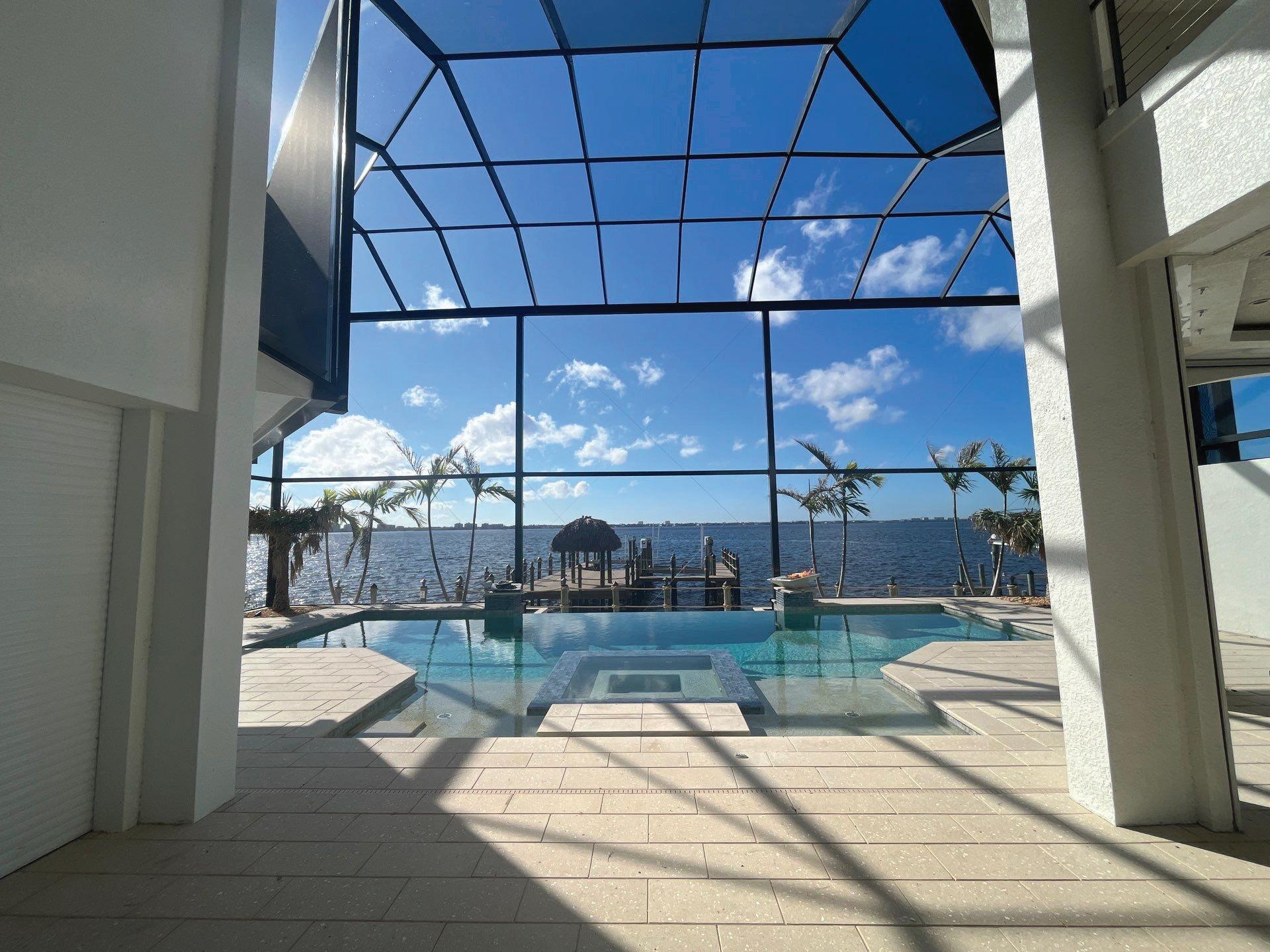






celed checks, bills and other documents received for repair work or temporary lodging.
Storm Debris
After a hurricane, it will be necessary to separate your curbside trash. Debris from the clean-up and recovery will be accepted by priority.
• Once roads are cleared, raw garbage such as animal, fruit or vegetable waste will be collected.
• The second priority will be normal household garbage including food waste.
• The third priority is yard waste. Place items such as trees, branches and shrubs in piles that can be easily managed by collection personnel.
• The last collection priority will be construction debris such as lumber, roofing and concrete.
• Your county may accept food waste at the local waste management facility. Contact the facility for drop-off hours.
• Do not block your road with trash or debris.
Storm Debris Removal Information
• Charlotte: 941.575.3600
• Collier: 239.252.2380
• DeSoto: 863.993.4831
• Glades: 863.946.6020
• Hendry: 863.675.5222
• Unincorporated Lee: 239.533.8000
UP AROUND AND ABOUT THE HOUSE
Household Priorities
• Pump or bail water out of the house as soon as possible.

• Open the windows to let the house air out and give the walls and floors a chance to dry.
• Shovel mud out before it can dry, then scrub floors and walls with a brush and mild soap and water.
• Make sure all appliances are unplugged as a general safety precaution.
Stoves and Ovens
• Clean the outside with a grease cutter, then with detergent and water.
• Clean the inside with conventional oven cleaner.
Refrigerators and Freezers
• To remove odors, wash the inside and the plastic door gasket with detergent and water.
• Rinse with a cloth and clear water. Wipe dry.
Washers and Dryers
• Pour a disinfectant into the empty washer. Run a 15-minute cycle using the hot water setting.
• Unplug the dryer and wipe the drum and dryer door with a cloth dipped in disinfectant solution. Rinse with a cloth dipped in clear water.
• Leave the dryer door open until all parts are dry, preferably overnight.
• Leave the dishwasher door open until all parts are dry.
Books and Papers
• Place books on end with the leaves separated. When partially dry, pile and press the books. Continue alternatng drying and pressing until thoroughly dry.
• If books and papers are very damp, sprinkle some cornstarch between the pages to absorb moisture. Leave in place for several hours, then brush off.
• When papers and books are almost dry, try using an electric iron set on low heat to flatten the pages. Separate the pages to prevent odors.
• Once books are completely dry, close them and clamp them closed to help them retain their shape. Getty
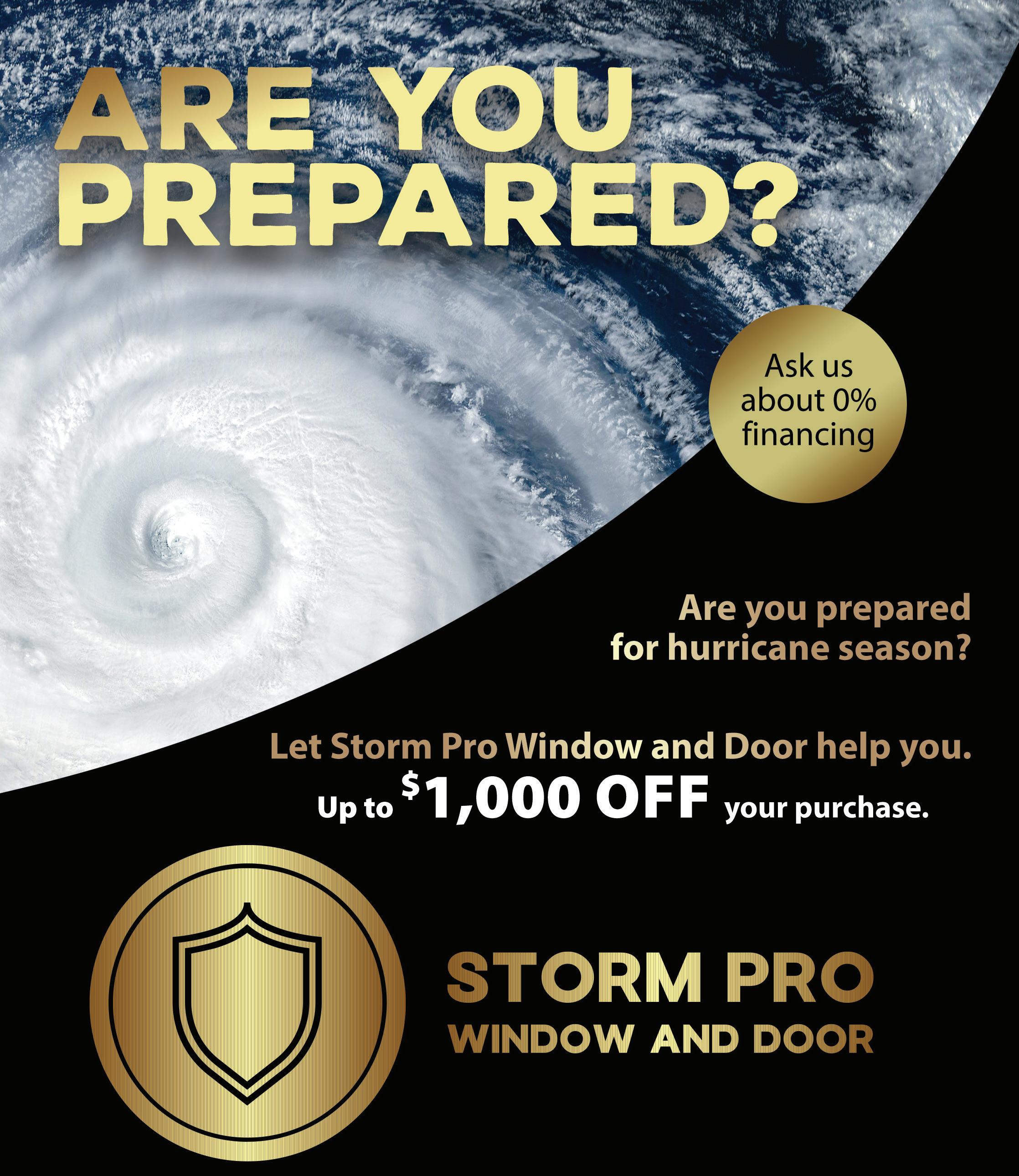

• Photocopy important papers because they may quickly disintegrate, even if they have dried out.
Swimming Pools
• Remove as much debris by hand as possible and lower the water level to normal.
• Add a chlorinator, as in the form of the 10% hypochlorite granules commonly known as shock. Repeat the process and super chlorinate again and clean the filter frequently until the pool returns to normal.
• Have the gas company reconnect the heater line. If your pool needs structural repairs, choose a contractor carefully.
Looting/Curfew
As soon as the hurricane ends, looting may begin. With walls blown away and windows blown out, residences are often easy targets. Given the widespread fear of looting, some residents choose to stay in their damaged homes to protect their valuables. However, it’s important to note that statistically, crime is actually lower after a disaster. A curfew may be enacted for several nights to combat theft and vandalism.

Be Safe, Not Sorry
Every year, 70 people in the United States die from generator-related carbon monoxide deaths and thousands more are injured. B etween 2005 and 2017, the U.S. Consumer Product Safety Commission noted more than 15,000 people throughout the nation were treated in emergency rooms for some form of portable generator-related carbon monoxide poisoning.

HERE’S HOW YOU CAN AVOID BECOMING
• Read the owner’s manual and be sure to follow the manufacturer’s recommendations.
• Do not use a generator until it is properly grounded.
• Plug devices directly into the generator. Never backfeed your house circuits or connect your generator to your house wiring.
• Do not overload the generator capacity.
• Be aware of carbon monoxide poisoning. Never use a generator indoors, outside under a window, on a covered patio or in any space without adequate ventilation.
• Keep flammable items away from generators. The exhaust system is very hot.
• Never refuel your generator inside your home or while it is hot. A serious fire could result.
• Do not use in or around wet areas to prevent electric shock.
• Check electrical cords to ensure the insulation is in good condition.





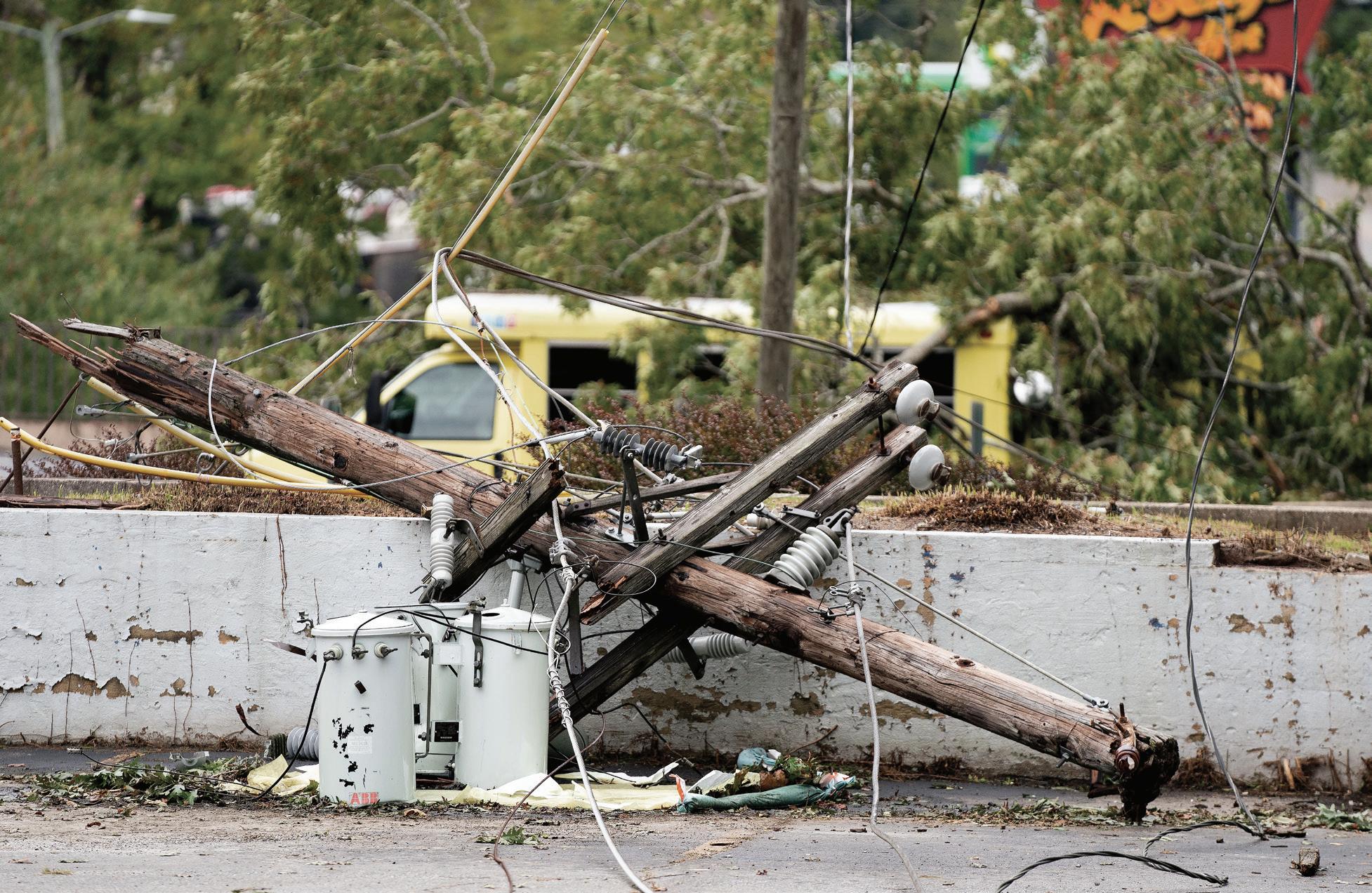
After a hurricane, downed power lines, electrical equipment and household wiring can all be potential dangers. Here’s how to keep yourself and your family safe when faced with such problems.
• If your electrical equipment is wet or near water, turn off the main breaker. If reaching the breaker box or main switch requires entering flood water, call an electrician to turn it off.
• Do not turn electrical equipment back on until it has been professionally inspected.
• Avoid downed power lines, as they may still be energized and dangerous. Stay clear of water touching downed power lines, and do not trim trees or remove debris near them.
• If you’re removing debris in or around your home, do not pile it under or near electrical lines or equipment.

• If any appliances were on when the power was lost, be sure to turn them off. If left on, they could be fire hazards.
• Use flashlights or battery-powered lanterns. Avoid using candles.
• Report any downed power lines to the utility company. Otherwise, keep utility telephone lines clear for emergency calls.
•
Your electric provider will begin assessing damage to the electrical system as soon as the storm passes.
• Power will first be restored to essential services, such as hospitals, traffic signals, shelters, communication centers and law enforcement.
• Next, your electric provider will restore the greatest number of customers in the shortest time.
• Finally, service is restored to individuals or for those that need reconnection of electrical systems that have been repaired.
•
Start by resetting all your circuit breakers. If that’s not the issue, then:
• Your home may be on a different feeder line or power transformer.
• The transformer providing power to your location may be damaged. These are often the last repair priority, as electrical providers focus on restoring the greatest number of customers first.
• Your weather head conduit (the pipe and wire extending above your roof) is damaged or bent. It must be repaired by an electrician and be inspected before power can be restored. Getty



LCEC works year-round to harden the electric system and prepare for storms. Utility customers are encouraged to prepare with a plan that includes special needs, evacuation, and a storm kit.

LCEC has a tried and true plan that is updated and practiced annually. The electric grid is built to be resilient. Resources and relationships are cultivated in case they are needed.
Preparation is key
LCEC has comprehensive vegetation management, inspection, and maintenance plans to mitigate the potential for outages. When power is interrupted, the LCEC team is prepared to respond as quickly and safely as possible.

Since 1940, LCEC employees, contractors, and vendors have been there to respond to every major event with a sense of urgency. We know our members depend on electricity to power their lives and we are committed to meeting the needs of our community 24/7/365.
Visit the lcec.net Storm Center for more information about Storm Preparedness.

• If your home has its own underground service that’s damaged, it must be repaired by an electrician and inspected before restoring power.
• If none of the above are the issue, and your neighbor has power while yours hasn’t been restored, contact your utility.
• Any electronic equipment that has been subject to rain or flood water may not be salvageable. Attempting to repair it yourself can be dangerous to you and the device. Use extreme caution around wet electronics, especially if trying to repair or restore them.
• Do not open any electronic appliance to dry the inside.
• Unplug electronic items and allow them to dry thoroughly. While the outside may be dry, the internal components may not be. Allow several days for complete drying.
• To speed up drying, place equipment in the sun, but monitor it closely. Bright sunlight can damage liquid

crystal displays (LCDs) in flat-screen televisions and computer monitors.
• When you’re sure the electronic item is completely dry, plug it in to test. If it doesn’t work immediately, allow another day to dry.
• If the power indicator light comes on, leave the equipment on for about 10 minutes, then turn it off for 30 minutes. Repeat the process while adding an extra five minutes on each subsequent try.
• If the power indicator does not come on, and the outlet is in working order, have the appliance professionally repaired.
• If you see smoke or hear crackling, unplug it immediately and have it repaired.

Lithium-ion batteries used in electric vehicles (EV), golf carts, scooters, battery-powered generators and even charging bricks can be very dangerous when subjected to flood waters. A lithium-ion battery exposed to water, especially salt water, can shortcircuit and discharge its stored energy. Called “thermal runaway,” this discharge can create a chain reaction causing the battery cells to ignite and burn. As they’re often at the bottom of the engine, EV batteries can be especially susceptible to flood damage. To minimize the risk of a lithium-ion battery fire, move the vehicle or item away from any potential flood areas before the storm. After a storm, you can reduce your risk of EV fires by following these steps:
• If an EV is submerged in salt water, unplug it from the wall before power is restored.
• Assume the battery and associated components are energized and fully charged at all times.
• Do not start or drive an electric vehicle that has been flooded until it has been professionally inspected. Thermal runaway can occur hours or days after floodwaters recede.
• If your EV has flooded, put it in neutral and move it at least 50 feet from any structure, vehicle or combustible material.





Our expertise lies in professionally installing and maintaining whole-home generators, ensuring our customers always have dependable power when they need it most— especially during a hurricane. With years of experience and a commitment to quality service, we help homeowners stay prepared for any outage. Don’t wait until the next storm is on the horizon—secure your home with reliable backup power today and gain peace of mind knowing you're always covered! Bo’s Electric is your
Thank you, Bo's Electric! You all installed our generator last summer. During hurricane Milton our power went out for several hours. The generator kicked on immediately. Music to my ears! You all have provided great service over the past year! Thank you again! - Connie D. 24/7 SUPPORT CERTIFIED TECHNICIANS
LICENSED CONTRACTOR
SERVING FLORIDA FOR OVER 50 YEARS!


We understand the importance of being prepared for power outages, especially during hurricane season. That’s why we’ve partnered with GreenSky to provide flexible financing options, making it easier than ever to secure reliable backup power for your home.

According to the State Fire Marshal’s Office, there were 48 lithium-ion battery fires related to storm surge from Hurricane Helene, with 11 of those fires associated with EVs. That figure is important to note, since their batteries are often at the bottom of the engine, making electric vehicle (EV) batteries more susceptible to flood damage than gas-powered vehicles. Flood waters, and especially salt water, can damage an EV’s battery, causing it to short-circuit and discharge its stored energy. That process, called “thermal runaway,” can create a chain reaction that causes the battery cells to ignite and burn. And once it ignites, any fire related to an electric vehicle battery can be extremely difficult to extinguish because, unlike a combustion engine, the fire can continue reigniting. Electric automobiles aren’t the only devices at risk, as lithium-ion battery-powered vehicles such as golf carts and scooters are also vulnerable to thermal runaway if subjected to flood waters.
“Floridians living on the coastline who own EVs are at risk of those EVs being inundated with saltwater storm surge which presents a dangerous fire threat to Florida families and their homes. If you have one of these vehicles including cars, scooters, hoverboards, golf carts or children’s toys that have been compromised by flooding, please unplug the vehicle or device, and move it safely away from your home or apartment into a clear open space,” said a Fire Marshal’s Office official in a release. “If a vehicle needs to be towed, contact a reputable tow company in your area to safely remove it from your property. EVs and lithium-battery powered devices

can not be disposed of in a typical car lot or trash bin, so you will also want to contact your local government on the best locations for safe disposal.”
The simplest way to avoid any EV or lithium-ion battery fire is to move the vehicle or device away from any potential flood areas before the storm. You can further minimize your risk of electric vehicle fires after a storm by following these steps:
• Smoke or strange noises from the EV battery could be an indication of battery damage, but a battery may also be damaged without showing either of those signs. If you see smoke coming from your EV, immediately call 911.
• If an EV battery is suspected to have been subjected to or damaged by flooding, particularly an EV or hybrid vehicle battery, do not attempt to charge or drive the vehicle.
• If an EV or device is submerged in salt water, unplug it from the wall before power is restored.
• Assume the battery and associ-
ated components are energized and fully charged at all times.
• As thermal runaway can occur hours or days after floodwaters recede, do not try to start or drive an electric vehicle that has been flooded until it has been thoroughly checked by the dealer or certified mechanic.
• If you suspect your EV battery is damaged, do not store it indoors or near structures in case the battery does ignite or is venting hazardous gasses.
• If your EV has flooded, put it in neutral, then move it at least 50 feet from any structure, vehicle or combustible material. Note that the process for doing so without turning it on will vary by vehicle. Follow the vehicle manufacturer’s recommendations.
• Do not attempt to open the battery pack at any time.
• If your EV has sustained damage and cannot be towed or moved safely, request assistance from emergency responders to disconnect the battery pack from the vehicle safely.













THE AFTERMATH OF A HURRICANE, THERE ARE NUMEROUS HEALTH AND SAFETY CONCERNS TO CONSIDER. TO ENSURE YOUR SAFETY AFTER A STORM, REMEMBER THESE IMPORTANT POINTS.
Operations at hospitals and medical facilities may be limited if they’ve sustained structural damage or loss of power. Mobile health units may be available to provide basic services to residents with cuts, scrapes, bruises and mild illnesses. Stay tuned to WINK News, The Weather Authority, for more medical information.
Carbon monoxide is a poisonous gas that can be easily avoided by not burning charcoal, gas grills or gaspowered generators inside houses,
garages, vehicles or tents. Remember that carbon monoxide is colorless and tasteless, and that carbon monoxide poisoning symptoms include fatigue, weakness, chest pains, shortness of breath, nausea, vomiting, headaches, confusion, lack of coordination and impaired vision.
If food that has not been refrigerated for more than two hours has an unusual odor, color or texture and is no longer cool to the touch, it is unsafe to eat. Throw it out.
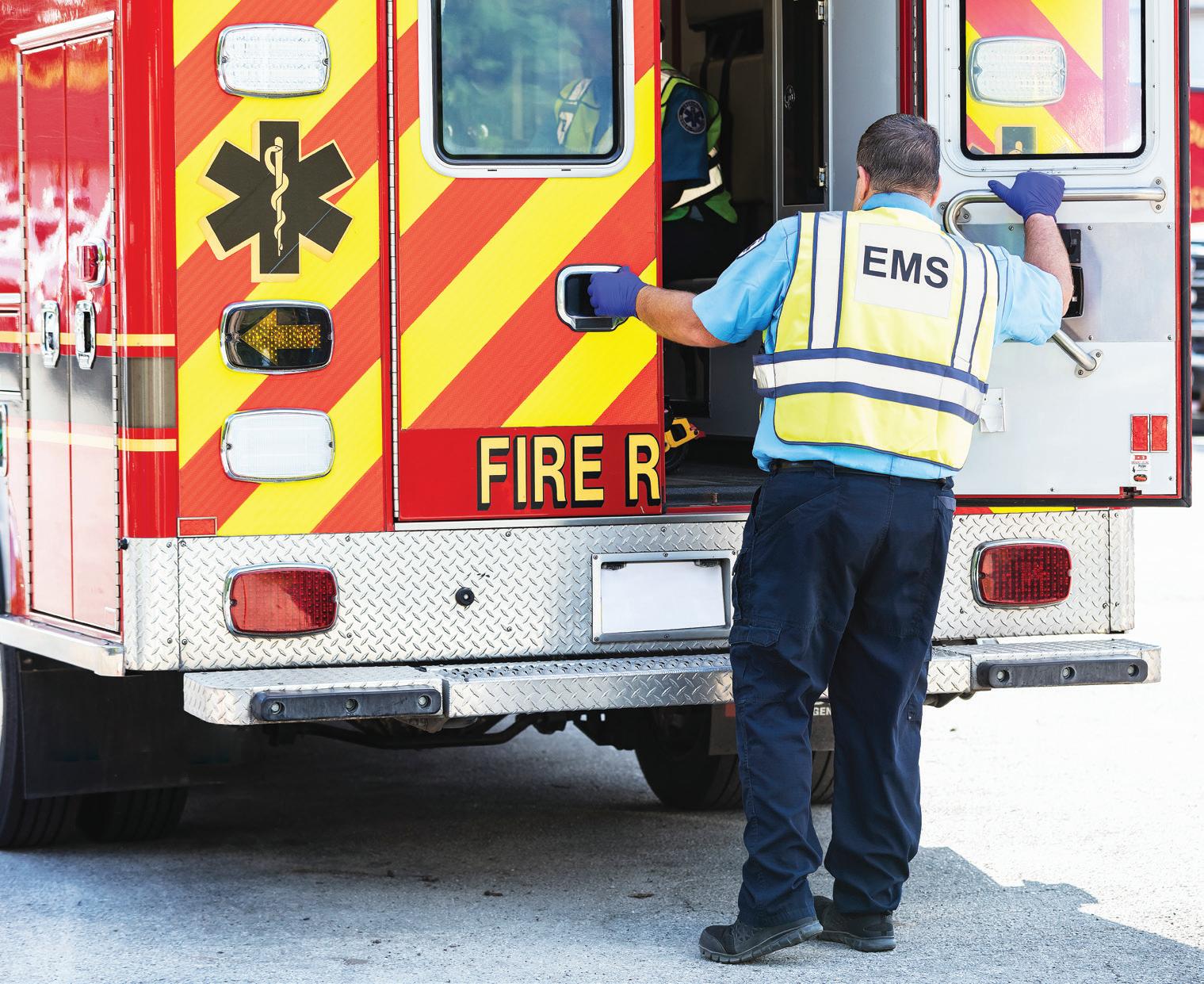

Do not assume that public water supplies in hurricane-affected areas are safe to drink. Instead, use bottled water for cooking, eating and drinking until public announcements have confirmed the water’s safety. If no bottled water is available, vigorously boil tap water for at least one minute to ensure it is safe to drink.
Wash your hands often with soap and clean water. If you’re not sure about the source of the water, use an alcohol-based hand sanitizer to decrease the risk of illness, infection or contact with disease-causing bacteria.
Mosquitoes will increase in number dramatically after heavy rains and flooding. To minimize your risk of bites and mosquito-borne diseases, public health officials recommend the five D’s of prevention:
• Dusk to Dawn—avoid the outdoors from sunset to sunrise.
• Dress—cover up with longsleeved shirts, long pants and socks.
• DEET—use repellents with DEET, usually 30% solutions. Do not use DEET on children younger than 2 months old.
• Drainage—inspect your home and neighborhood, and dump any standing water where mosquitoes can lay their eggs.



Do you have what it takes to weather a hurricane in tropical Southwest Florida?
Portable Generators
Extension Cords
Grills & Cooking Supplies


Batteries/Battery Packs/Chargers

Anchor Systems
Crank Radios/TV Antennas
Propane & Fuel Cans
Weather Sealants
Flashlights
Ice & Coolers
First Aid Kits
Tarps/Bungee Cords
At Sunshine Ace Hardware, getting help is like going to your neighbor. Together, we will weather whatever Hurricane season may bring. Let our helpful team help you prepare!





If an evacuation order is issued, officials encourage you to make every effort to leave the area. As public shelters are likely to be crowded, other evacuation options may include:
Staying at your house if your area is not under an evacuation order, or if you do not live in a mobile or manufactured home.
Going to the home of a friend or family member who lives outside the evacuation zones.
Checking into a hotel or motel that’s outside the evacuation zones.
Traveling to a part of Florida that is not under an evacuation order.
If you do not have a safe place to go, head for a shelter. Lists of local shelters are available on county websites, as well as in this guide. When planning where you’ll go, remember some shelter locations may not be open and operating if they are too close to the storm and its path. Do not assume every shelter will be open during ev-

ery storm. Follow WINK News, The Weather Authority, via website, television or radio for updates.
If you must go to a shelter, here are some things for you to consider:
•There is a shortage of evacuation shelters. If you have a safe place to evacuate to, use that alternate location rather than a public shelter.
•Shelters are not hotels; they do
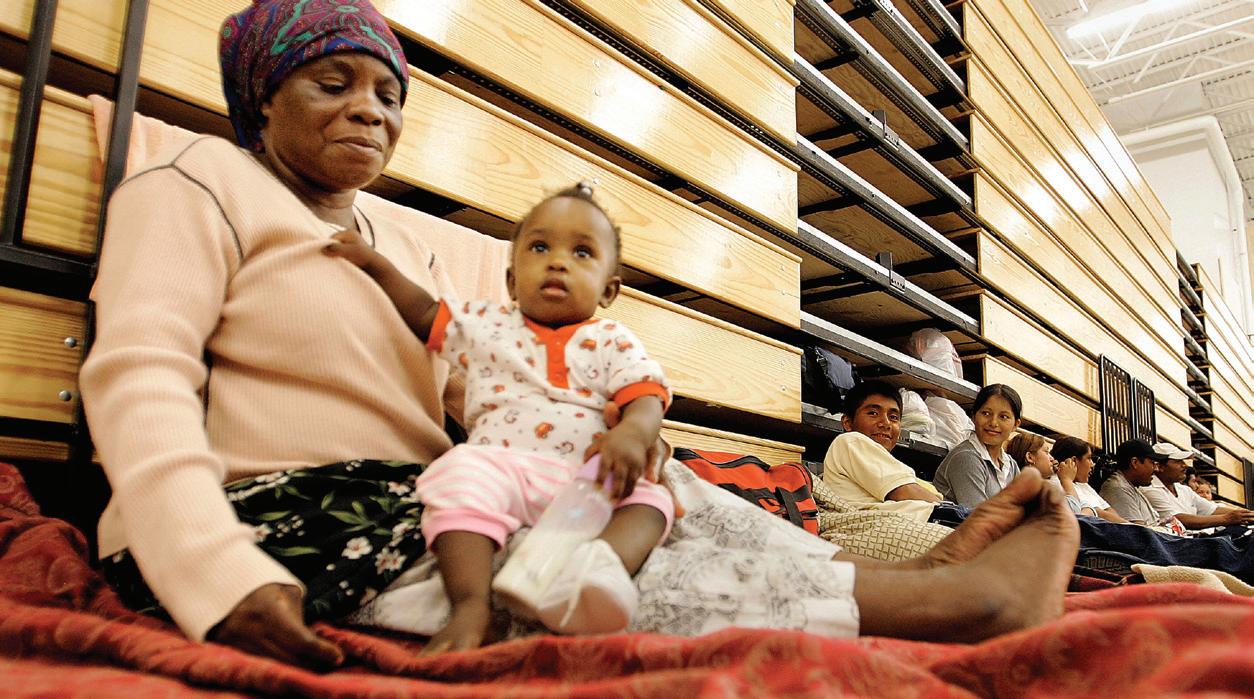
not provide any conveniences, luxuries or amenities. Bring your family’s disaster supply kit to ensure you have proper provisions.
• Food and water should be available, but there may be a slight delay in initial service.
• Cots are not provided in generalpopulation shelters.
• Weapons, smoking or alcoholic beverages ARE NOT allowed in shelters. In fact, arriving at a public shelter with weapons or liquor under any circumstances could get you arrested.
• Service animals are allowed at all shelters, but family pets are permitted ONLY in shelters designated as “petfriendly.” All service animals must have vaccination records and be caged. You must also provide their food, water, leash and waste management.



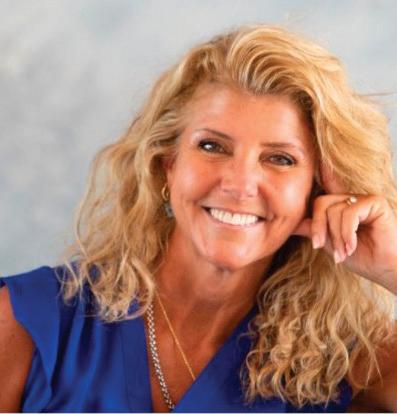


Drinking water
Snacks or special foods, including foods for special dietary requirements
Lawn chair
Bedroll
Pillows and blankets
Books, magazines or electronics with headphones
Medications
Change of clothing
Personal hygiene items (toothbrush, toothpaste, hand sanitizer, etc.)
Important documents and ID (driver’s license or passport, proof of residence, etc.)
If you are medically vulnerable, remember to also bring your personal health equipment and hygiene products

A special needs shelter is a temporary emergency facility capable of providing care to residents whose medical condition may require the use of electrical equipment, oxygen or dialysis, as well as to individuals with physical or cognitive conditions requiring assistance from medical professionals. Those eligible to evacuate to a special needs shelter should pre-register with Emergency Management.

Here’s what you should know about special needs shelters:
• You must register every year. Your application is good for one calendar year only.
• A companion or caregiver must accompany you during your time at the shelter. Typically, there are limited staff members on hand.
• You will receive a confirmation letter and instructions confirming that you’re on the special needs shelter registry, as well as what to expect if those shelters are opening.
• Remember, although special needs shelters provide more care than a general shelter, they do not provide the level of care found in a medical facility.
Prepare a pet supply kit that includes:
Non-perishable food
Water
Medications
Sturdy cage or carrier
Collar and leash
Up-to-date vaccination records
Also consider:
Keeping photos of your pet with you to help with identification if you’re separated.
Placing identification on your pet’s collar.
Using a microchip to help identify your pet should you be separated. Check with your county to see if a local animal services department offers a microchipping program.










CHARLOTTE COUNTY
Emergency Operations Center
% (941) 833-4000 charlottecountyfl.gov/ departments/public-safety/ emergency-management/
* PLEASE NOTE:
Do not depend on a particular shelter or refuge. Sites may, or may not, be opened depending on the size of the storm and the predicted landfall area.
*All Charlotte County shelters are pet-friendly.
• Harold Ave. Regional Park Recreation Center, 23400 Harold Ave.
• Kingsway Elementary School, 23300 Quasar Blvd.
• Liberty Elementary School, 370 Atwater St.
• Neil Armstrong Elementary, 22100 Breezeswept Ave.
COLLIER COUNTY
Emergency Operations Center
% (239) 252-3600 Colliergov.net/em
* PLEASE NOTE: Listen to local radio, check television and visit https://www. colliercountyfl.gov/government/ county-manager-operations/ divisions/emergency-management for additional shelter openings.

* Pets are accepted at all of the elementary and middle schools listed below.
• Immokalee High School, 701 Immokalee Drive
• Immokalee Middle School, 401 N. 9th St.
NAPLES
• Aubrey Rogers High School, 15100 Patriot Place
• Corkscrew Middle School, 1165 Oil Well Road
• Cypress Palm Middle School, 4255 18th Ave. NE
• Golden Gate High School, 2925 Titan Way
• Golden Gate Middle School, 2701 48th Terrace SW
• Gulf Coast High School, 7878 Shark Way
• Lavern Gaynor Elementary School, 2965 44th Terrace SW
• Oakridge Middle School, 14975 Collier Blvd.
• Palmetto Ridge High School, 1655 Victory Lane
—Special needs shelter
• Sabal Palm Elementary School, 4095 18th Ave NE
DESOTO COUNTY
Emergency Operations Center
% (863) 993-4831 Desotobocc.com
• DeSoto Middle School, 420 E. Gibson St.—Pet-friendly with proof of vaccination
• South Florida State College, DeSoto campus, 2251 NE Turner Ave. – Pre-Approved Special Needs Only; apply at: snr. flhealthresponse.com
GLADES COUNTY
Emergency Operations Center
% (863) 946-6020
Myglades.com/departments/ public_safety/emergency_ management/index.php
* PLEASE NOTE:
Not all shelters will be open in the event of an emergency.
BUCKHEAD RIDGE
• Buckhead Ridge VFW, 29012 E. State Road 78
• Lakeport Community Center, 1239 Red Barn Road
• Maple Grove Baptist Church, 12777 State Road 78
MOORE HAVEN
• Doyle Conner Building, 900 US Highway 27 SW
• Moore Haven Elementary School, 401 Terrier Pride Drive
• Moore Haven High School Gym, 700 Terrier Pride Dr. SW –Pet-Friendly
• Ortona Community Center, 2086 Ortona Locks Road


• Washington Park Community Center, 1182 Gamble St.
MUSE
• Muse Community Center, 3897 Loblolly Bay Road
• West Glades Elementary, 2586 State Highway 731–Special Needs and Pet-Friendly
HENDRY COUNTY
Emergency Operations Center % (863) 674-5400 Hendryfla.net/emergency_ management.php
* PLEASE NOTE:
The locations listed below are the county’s primary shelters. Secondary storm shelters will be opened only if needed.
CLEWISTON
• Clewiston High School, 1501 S. Francisco St.
• Pioneer Community Center, 910 Panama Ave.
LABELLE
• Labelle Middle School, 8000 E. Cowboy Way
• LJ Nobles Senior Center, 475 E. Cowboy Way— Special Needs Only. Must Pre-Register.
Emergency Operations Center % (239) 533-0622 Leeeoc.com
*All Lee County shelters are petfriendly.
* PLEASE NOTE:
Not all shelters will be open in the event of an emergency.
CAPE CORAL
• Island Coast High School, 2125 De Navarra Parkway
ESTERO
• Estero Recreation Center, 9200 Corkscrew Palms Blvd.
• Hertz Arena, 11000 Everblades Parkway
FORT MYERS
• Dunbar High School, 3800 Edison Ave.
• Gateway High School, 13820 Griffin Drive
• S. Fort Myers High School, 14020 Plantation Road
• Treeline Elementary School, 10900 Treeline Ave.
LEHIGH ACRES
• Amancer Elementary School, 641 Sunshine Blvd.
• E. Lee County High School, 715 Thomas Sherwin Ave.

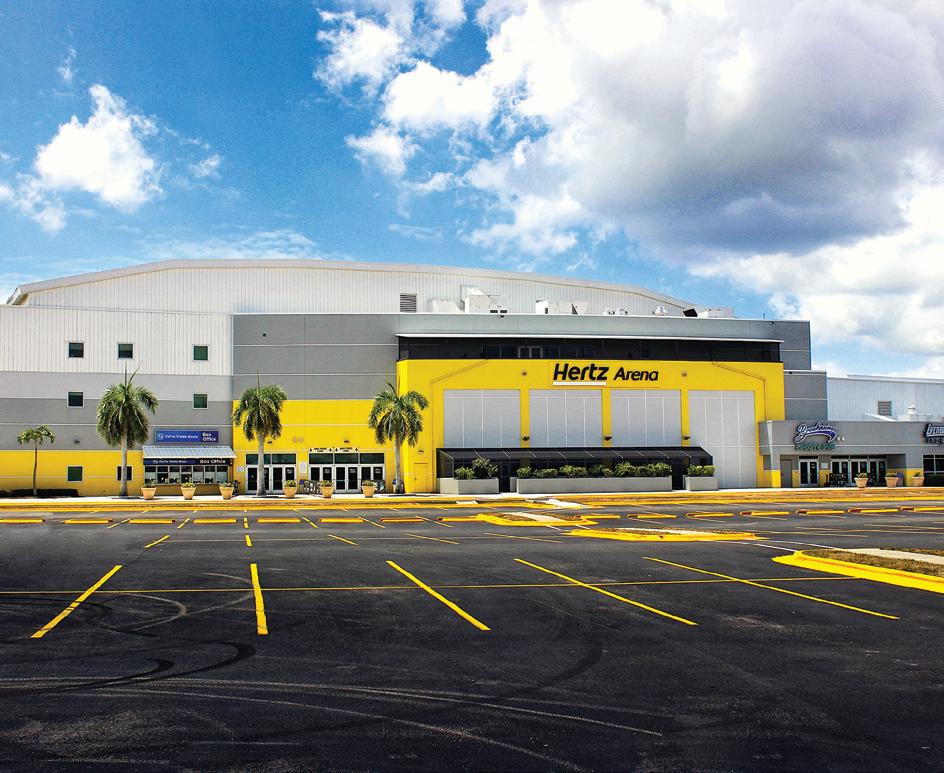
• Harns Marsh Elementary School, 1800 Unice Ave. N.
• Harns Marsh Middle School, 1820 Unice Ave. N.
• Mirror Lakes Elementary School, 525 Charwood Ave. S.
• Tortuga Preserve Elementary School, 1711 Gunnery Road
• Varsity Lakes Middle School, 801 Gunnery Road N.
• Veterans Park Recreation Center, 55 Homestead Road S.
NORTH FORT MYERS
• N. Fort Myers Academy of the Arts, 1856 Arts Way
• N. Fort Myers Recreation Center, 2000 N. Recreation Park Way
SAN CARLOS PARK
• Alico Arena, 12181 FGCU Lake Parkway E.
• Manatee Elementary School, 5301 Tice St.
• Oak Hammock Middle School, 5321 Tice St.

Do not depend on a particular shelter or refuge being open during a hurricane. Sites may, or may not, be opened depending on the size of the storm and the predicted landfall area. There often is a shortage of evacuation shelters.
If you have a safe place to evacuate to, plan to use that alternate location rather than a public shelter. Shelters are not hotels. They cannot provide any conveniences or luxuries, including cots and bedding.

NOTE: Map pin locations are approximate. Please refer to the shelter list on pg. 72 for an exact shelter address.














Structural
Hazardous
Asbestos,
Water
Full service demolition
Selective deconstruction
Site clean up & maintenance
Site protection and preparations
Core drilling & slab sawing
Concrete cutting and disposal
Roof & wall demolition
Restoration & repairs

Post
Environmental
Hazardous
Hazardous








Emergency Operations Centers
% Lee: (239) 533-0622
% Collier: (239) 252-3600
% Charlotte: (941) 833-4000
% DeSoto: (863) 993-4831
% Glades: (863) 946-6020
% Hendry: (863) 674-5400
• Federal Emergency Management Agency Disaster Assistance/ Registration:
% (800) 621-3362 , TTY: (800) 462-7585
• United States Small Business Administration:
% (800) 659-2955, TTY: 7-1-1
• National Center for Disaster Fraud Hotline:
% (866) 720-5721
• State of Florida Emergency Info:
% (800) 342-3557
• Florida Department of Financial Services Disaster Assistance Helpline:
% (877) 693-5236 or
% (850) 413-3089
• Red Cross Food, Shelter and Financial Assistance:
% (866) 438-4636
• Department of Children and Families Information for Southwest Florida:
% (813) 558-5500
• Area Agency on Aging for Southwest Florida Elder Helpline:
% (800) 963-5337
• Florida Attorney General’s Price Gouging Hotline:
% (866) 966-7226
• Florida Department of Business and Professional Regulation Unlicensed Activities Hotline:
% (866) 532-1440
• Florida Department of Business and Professional Regulation (to verify contractor licenses):
% (850) 487-1395
• Agricultural and Consumer Services:
% (800) 435-7352
• Domestic Animal Services:
% (239) 533-7387–Lee
% (239) 252-7387–Collier
• nhc.noaa.gov: The National Oceanic and Atmospheric Administration experts at the National Hurricane Center are leading authorities on Atlantic Basin hurricanes and tropical storms.
• floridadisaster.org: This is the state’s Emergency Operations Center’s website for up-to-date, statewide information, news alerts and contact information about storms, evacuations, storm surge and shelter information.
• hotels.petswelcome.com for pet-friendly lodging in Florida.
• Division of Workers’ Compensation:
% (800) 342-1741
• Florida Association of Electrical Contractors:
% (407) 260-1511
• Florida Wall and Ceiling Contractors Association:
% (407) 260-1313
• Associated Builders and Contractors of Florida:
% (813) 879-8064
• Collier, Glades, Hendry, Highlands, and Lee:
% (239) 596-6868 or redcross.org/southflorida
• Charlotte, DeSoto, Manatee, and Sarasota:
% (941) 379-9300 or redcross.org/local/florida/ central-florida/aboutus/locations/southwestflorida.html
• FPL:
% (800) 468-8243
• Lee County Electric Cooperative:
% (800) 599-2356
• Glades Electric Co-Op:
% (863) 946-6200
• You can donate food, water, and money: Harry Chapin Food Bank, 3760 Fowler St., Fort Myers.
% (239) 334-7007 or harrychapinfoodbank.org.
• Salvation Army Donation
Hotline:
% (800) 725-2769
• American Red Cross:
% (800) 435-7669
• fema.gov: This is the Federal Emergency Management Agency website, and the official website for the National Flood Insurance Program. It offers detailed instructions on how to prepare for natural disasters, including action plans and safe rooms.
• redcross.org: The American Red Cross keeps residents informed about response and recovery operations.
• myfloridacfo.com: In the event of a storm, the Florida Department of Financial Services can assist with banking and insurance concerns.
• flash.org: The Federal Alliance for Safe Homes, dedicated to promoting disaster safety and property loss mitigation.
• fmo.org: The Federation of Manufactured Home Owners is a consumeradvocacy group that promotes hurricane safety.





Nothing is a bigger expression of your originality than your home. That’s why we created the first flooring technology to deliver exceptional style with 100% waterproof, kidproof and petproof performance. These authentic designs are easy to install, easy to live with and easy to love. All so you can express what makes you, you.

WINK NEWS, THE WEATHER AUTHORITY, STAYS WITH YOU DURING A HURRICANE
Though a hurricane may require you to evacuate your home, you can always take WINK News, the Weather Authority, with you, wherever you go. Even if you can’t watch TV, you have multiple options to follow the up-to-the-minute storm coverage Southwest Florida relies on from WINK News, The Weather Authority.
Reports from WINK News Chief Meteorologist Matt Devitt, Zach Maloch, Greg Rule, Nikki Sheaks, Lauren Kreidler and the entire Weather Authority team are available over radio, online or on your smartphone. You can follow storm coverage on 96.9 WINK-FM or 97.7-FM Latino, and watch live reports at WINKnews.com or on the WINK News app.
Whenever severe weather strikes, you can always trust WINK News, The Weather Authority, to keep you informed with the latest, most accurate updates available anywhere, anytime and anyplace.







This hurricane tracking map charts the areas of the Atlantic, Caribbean and Gulf of America where these powerful storms are most likely to form. These are also the regions that often bear the brunt of hurricanes’ destructive forces. Although we typically consider hurricanes to be tropical phenomena, weather changes off Africa’s west coast have an impact on how these storms are created. And those hurricanes can affect normal weather patterns far to the north and south of Florida and the Gulf states.












